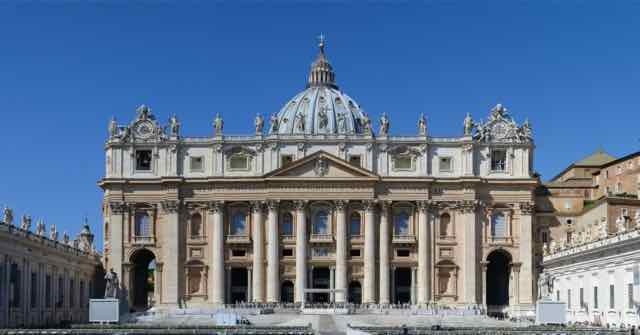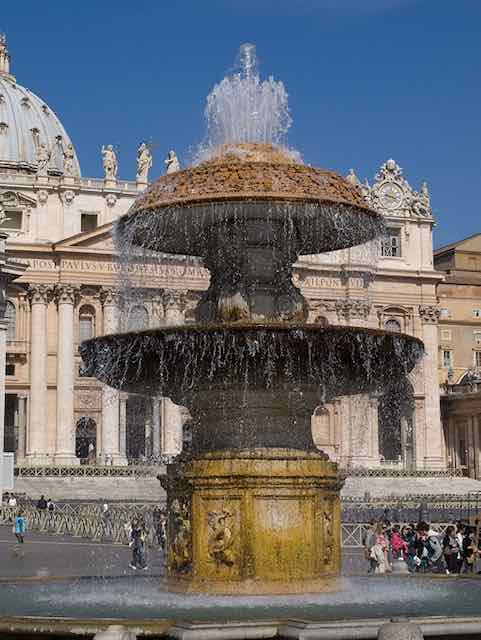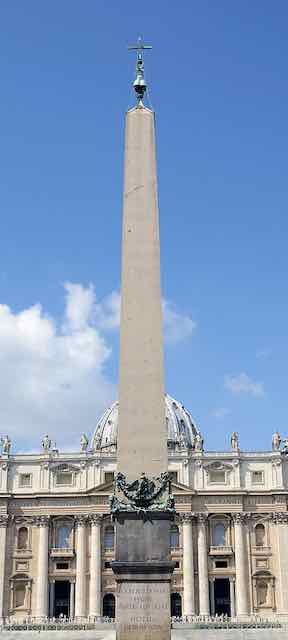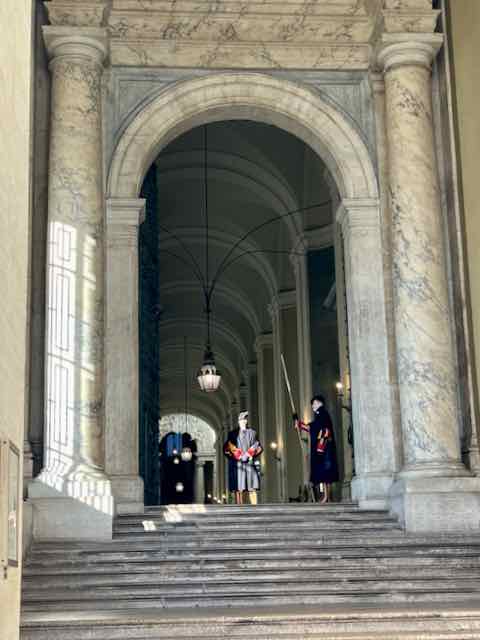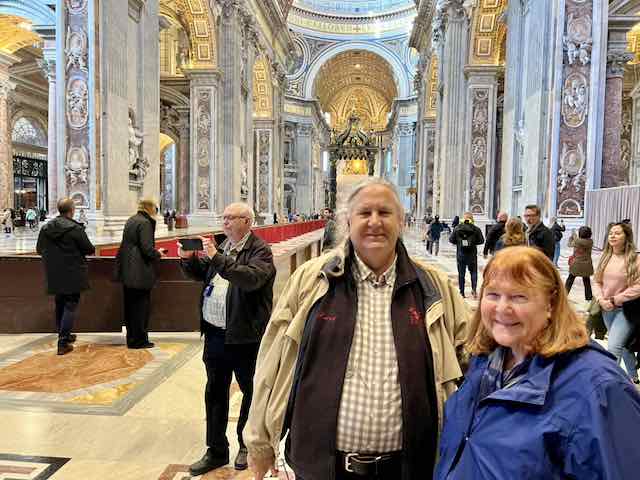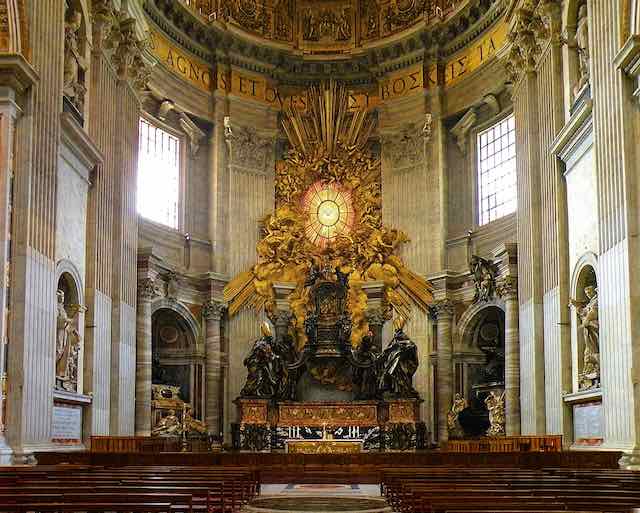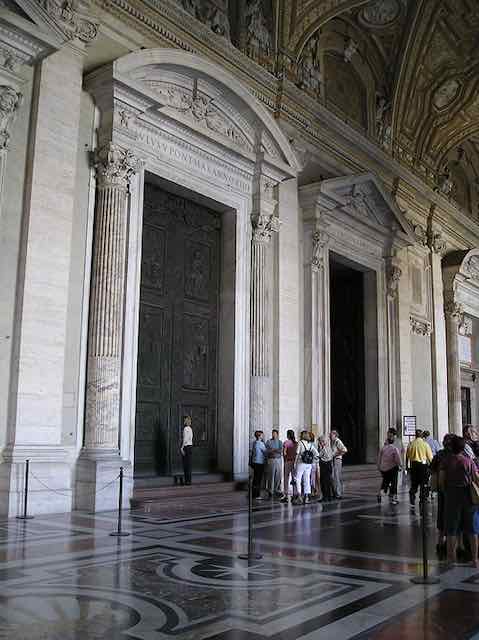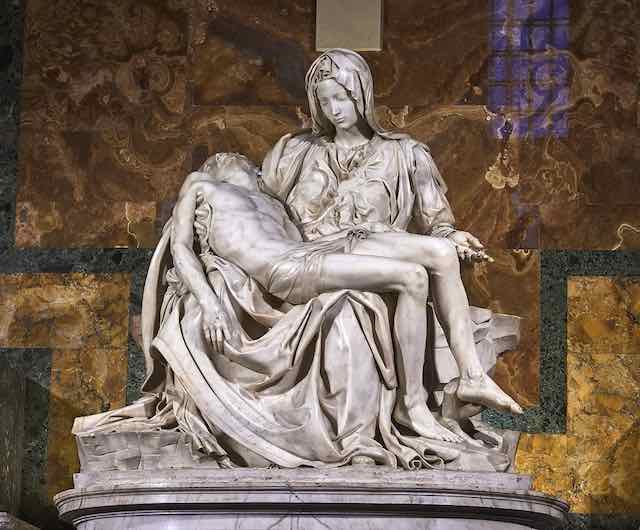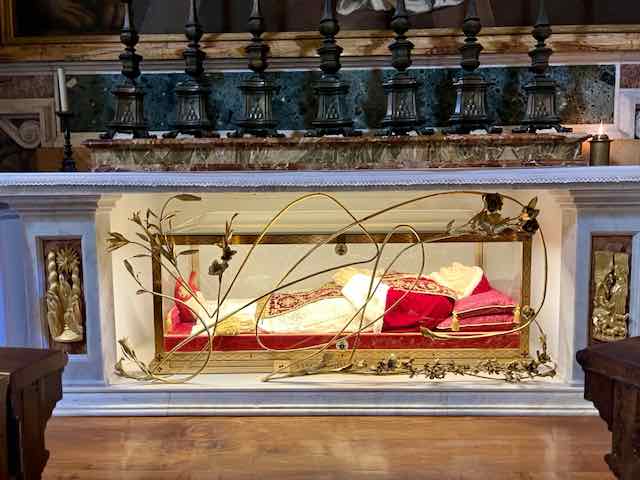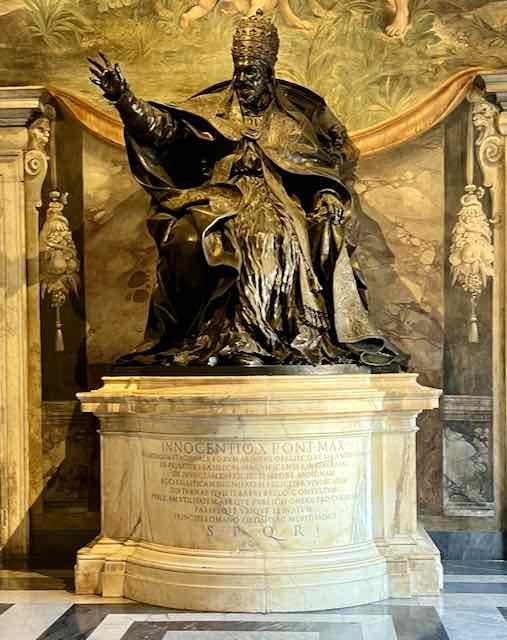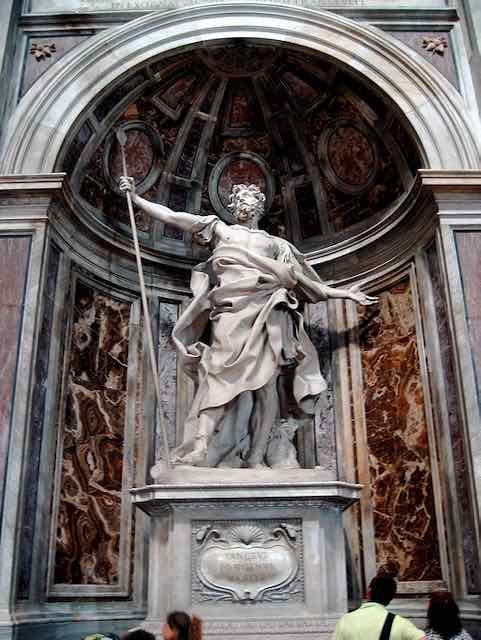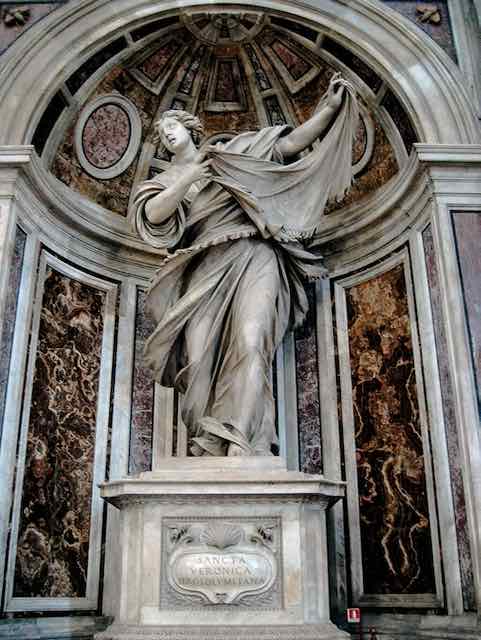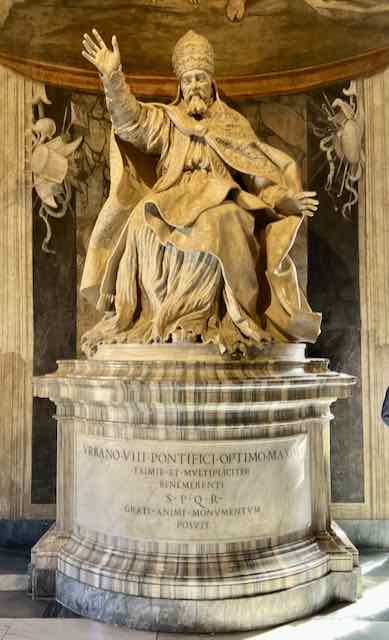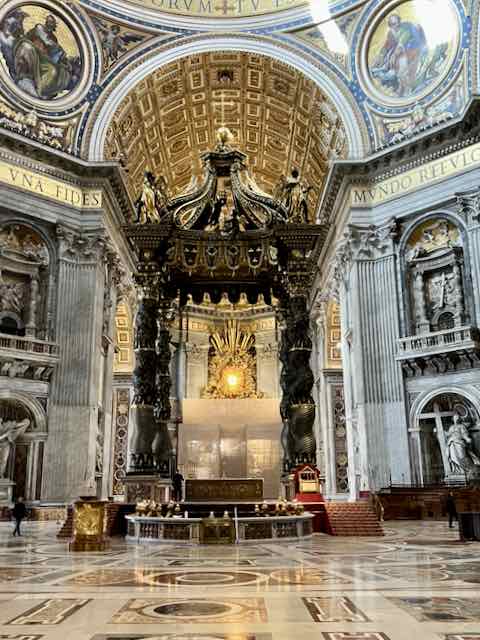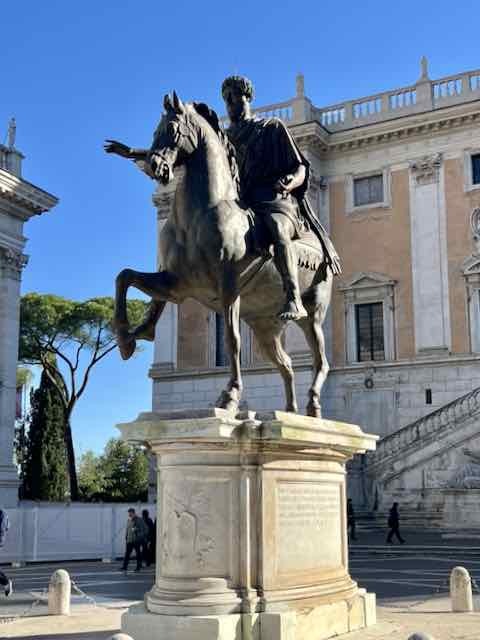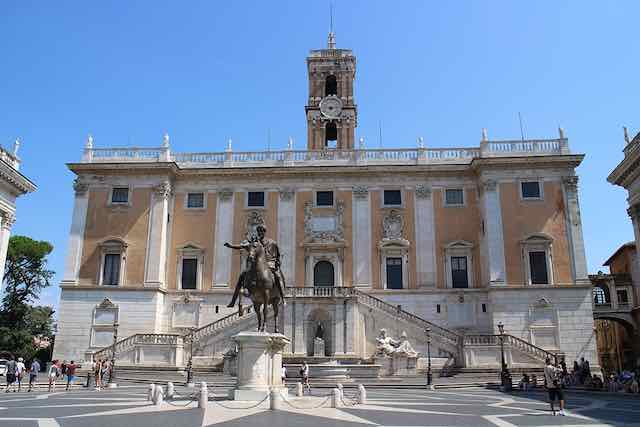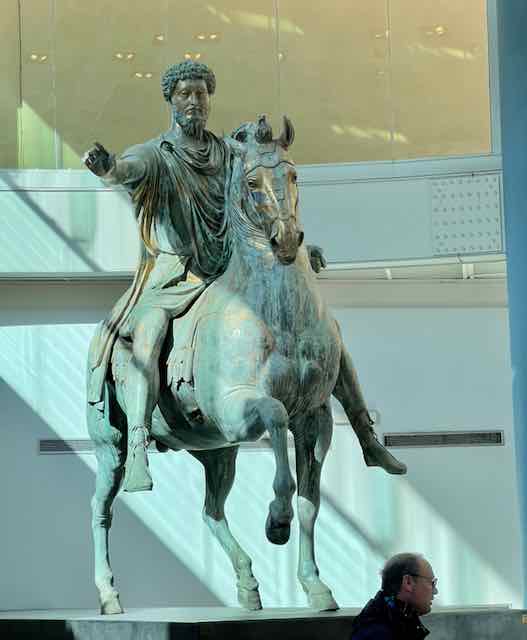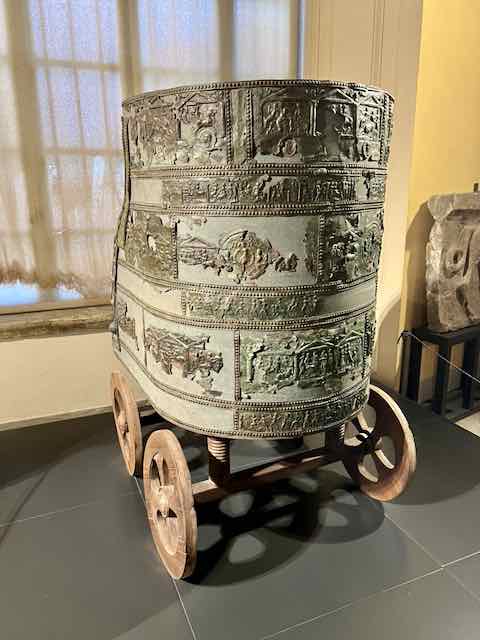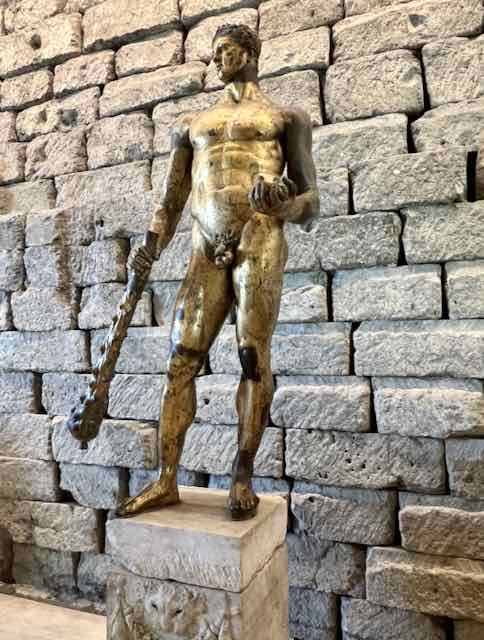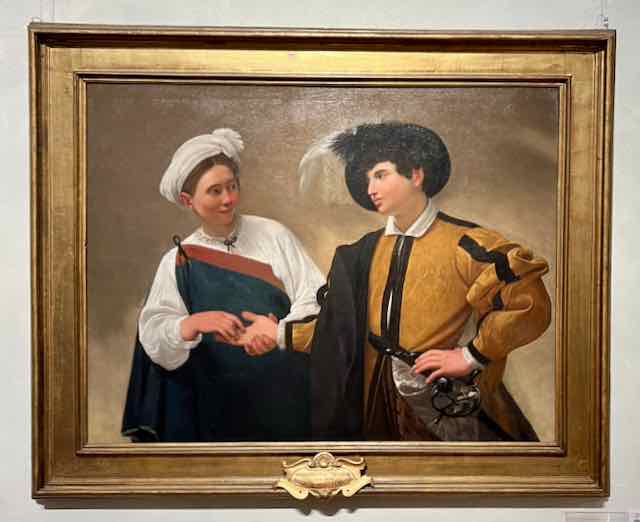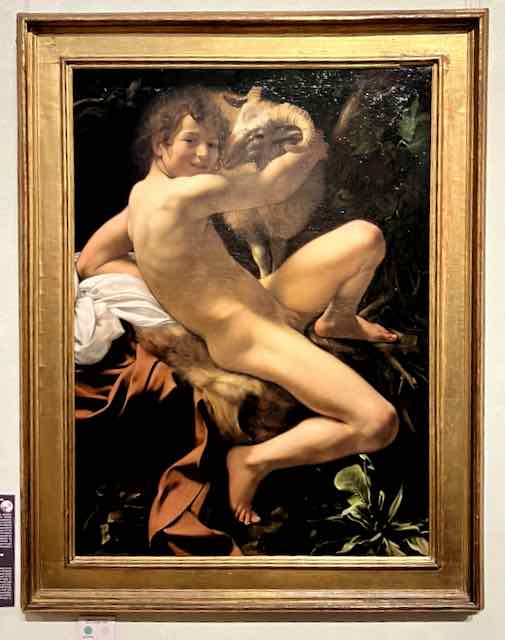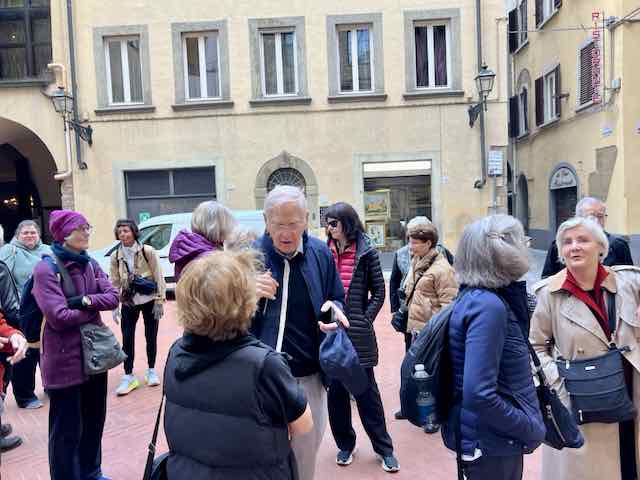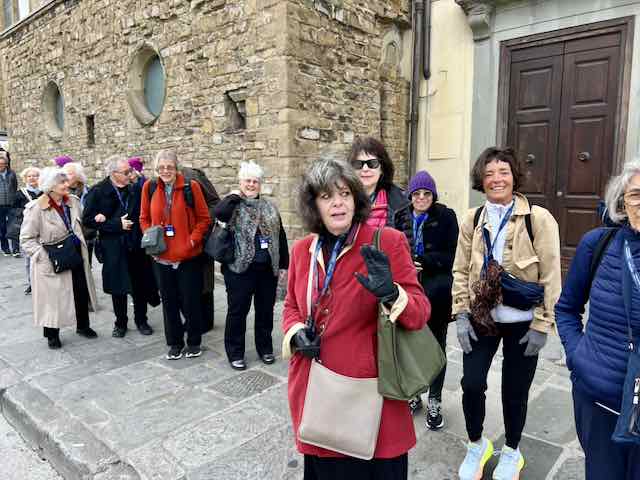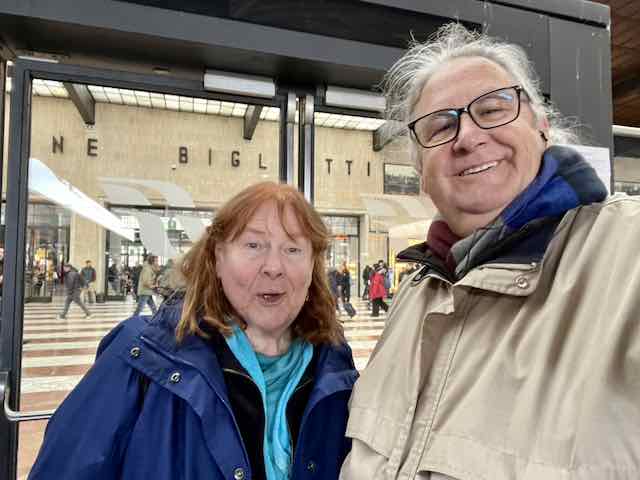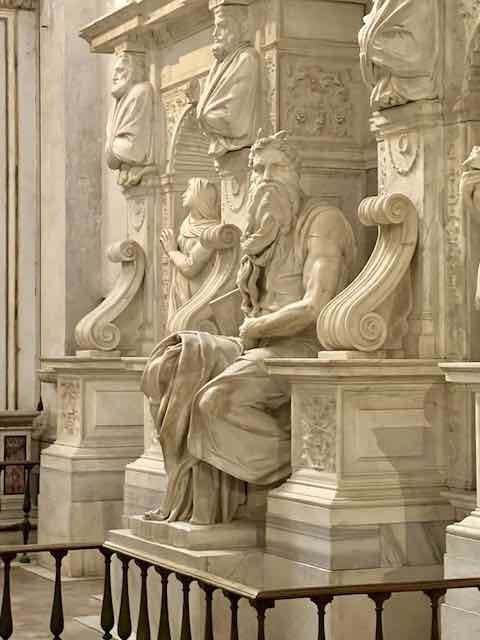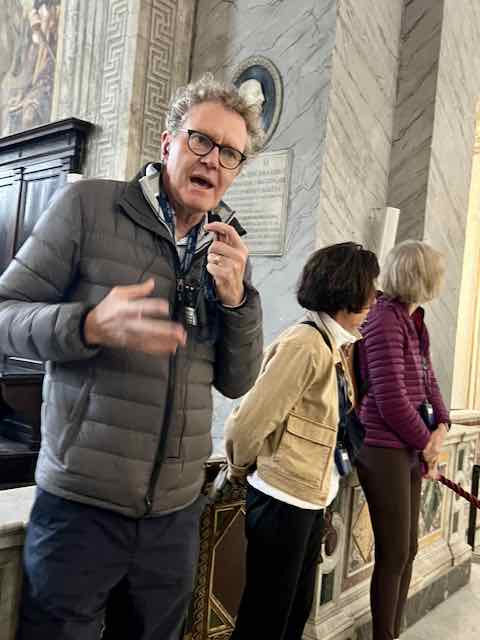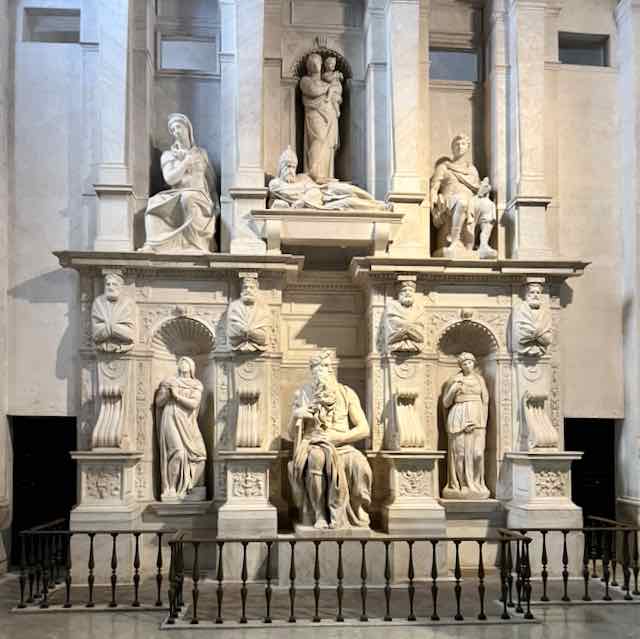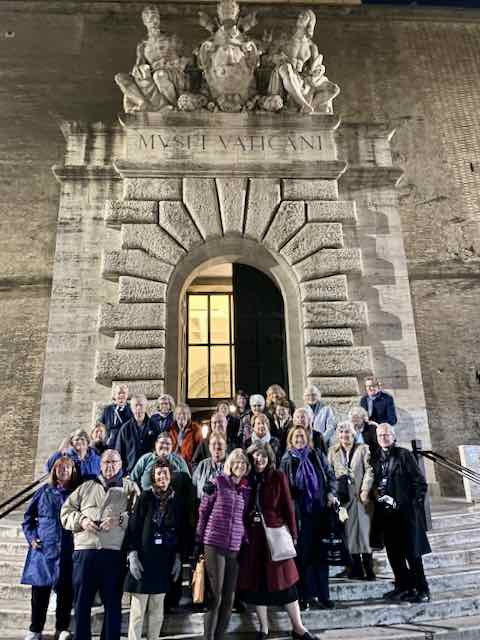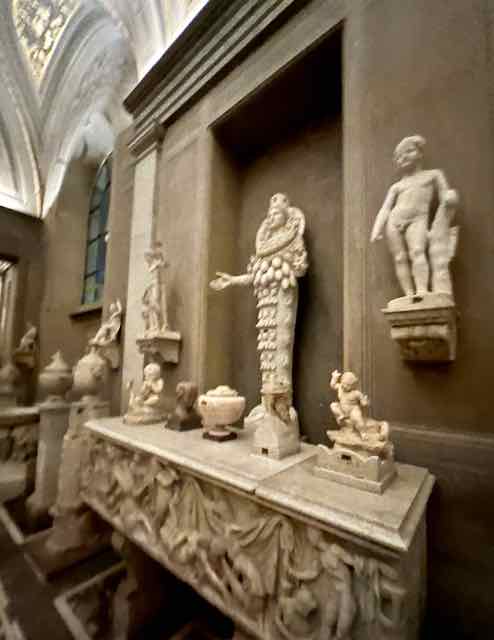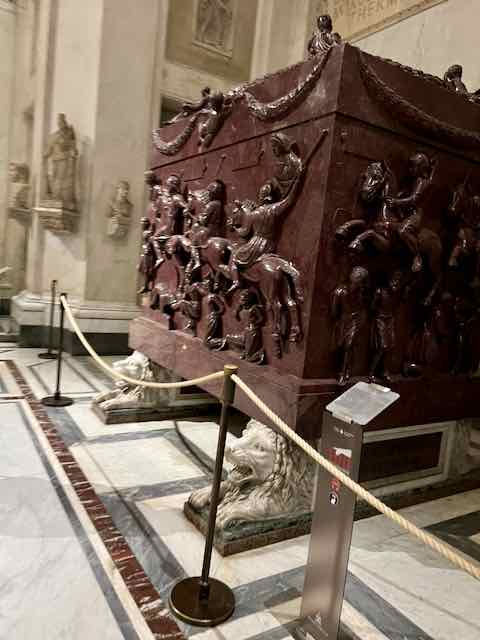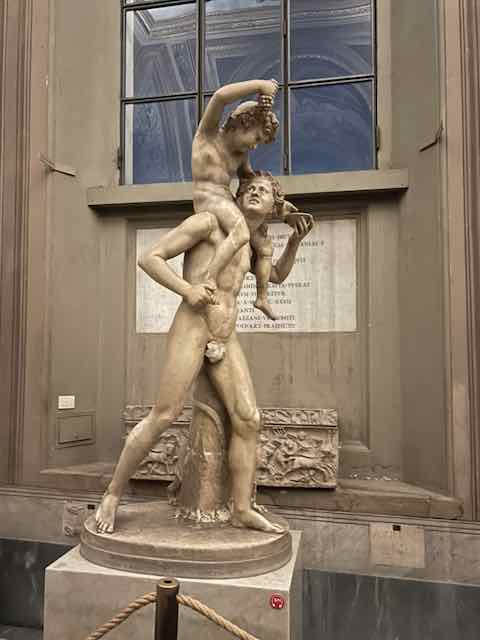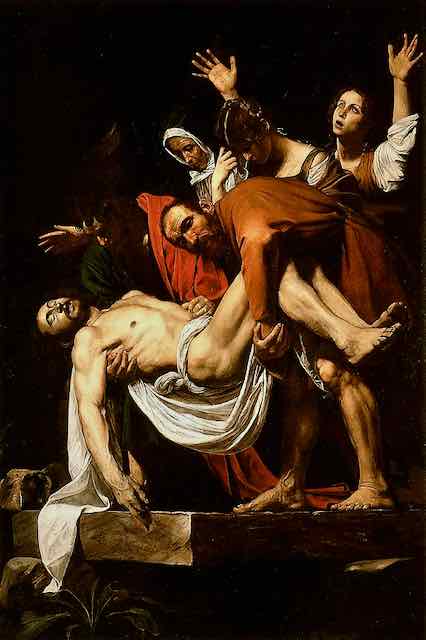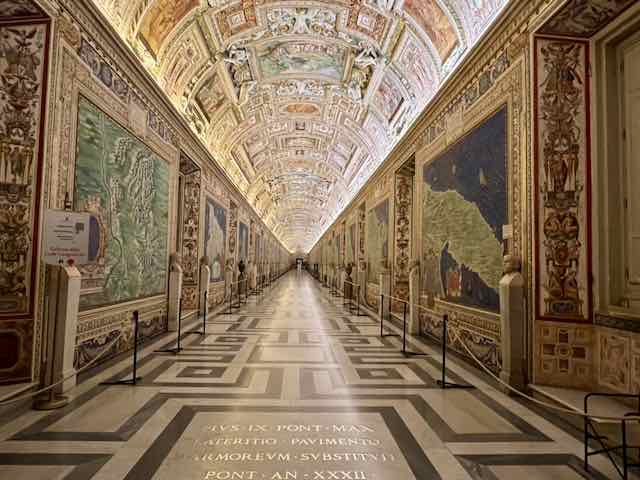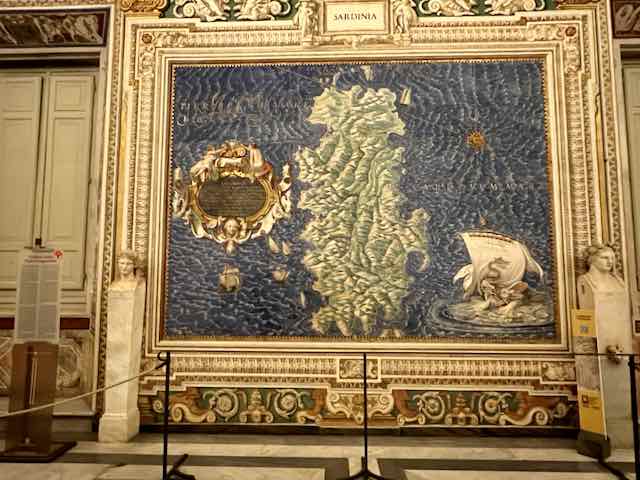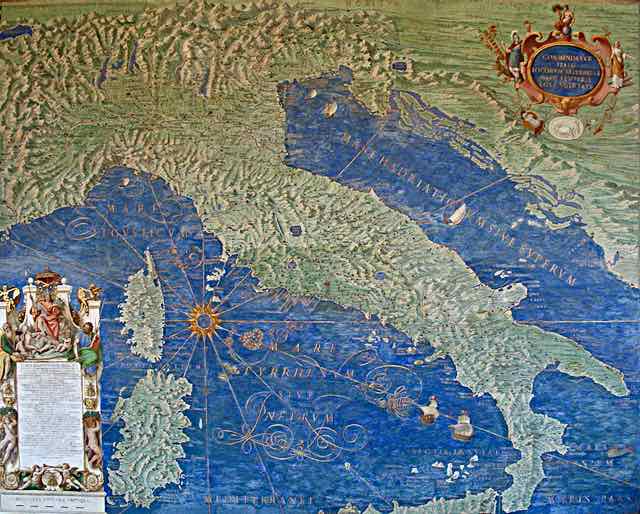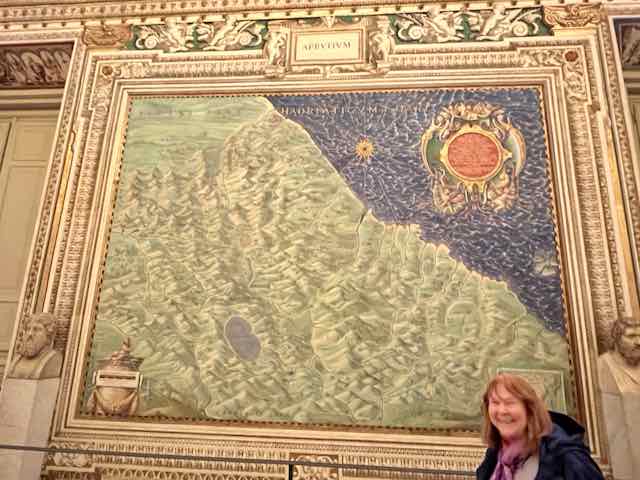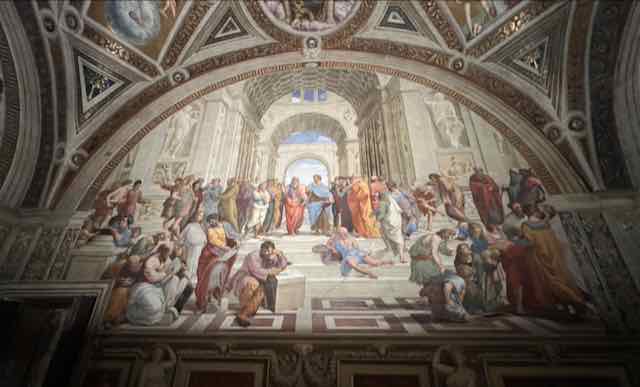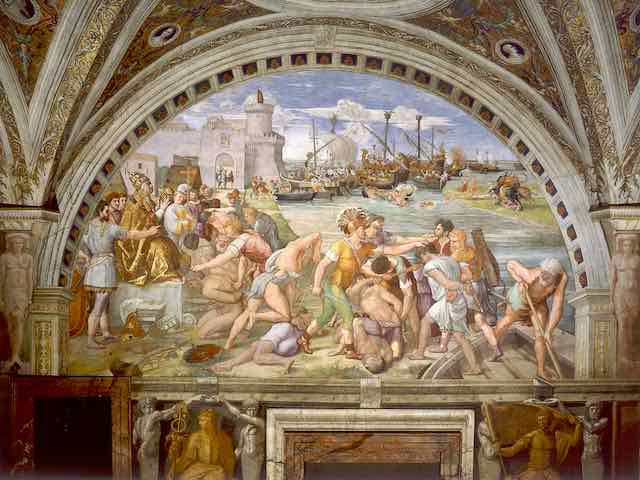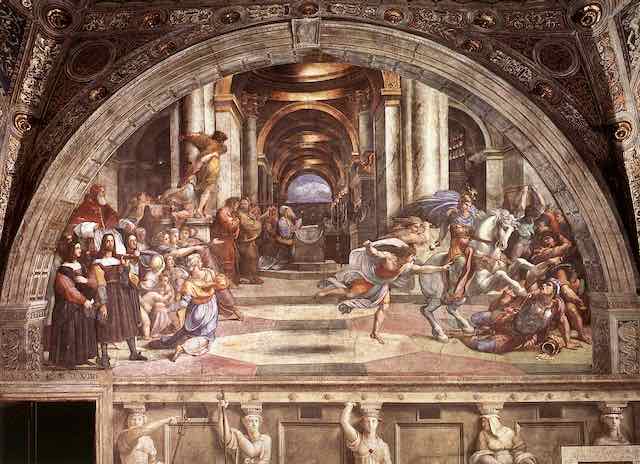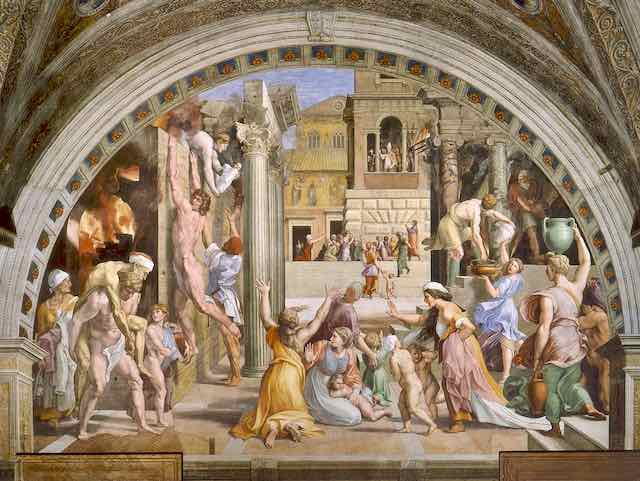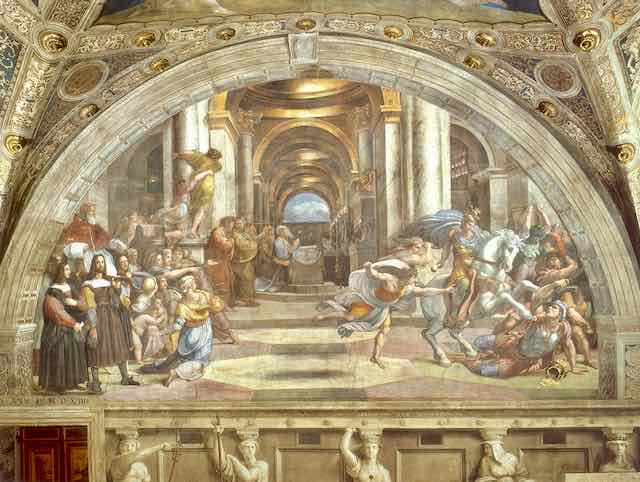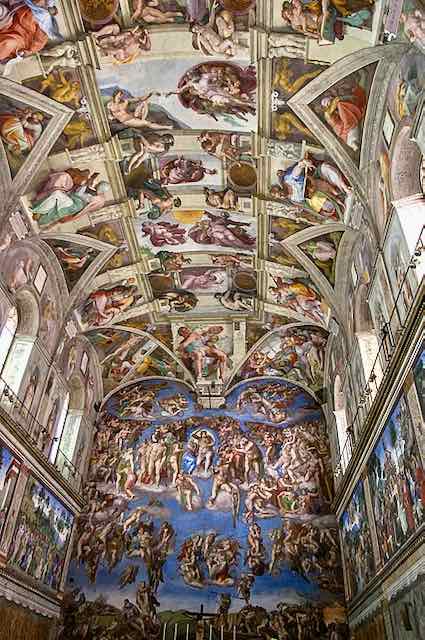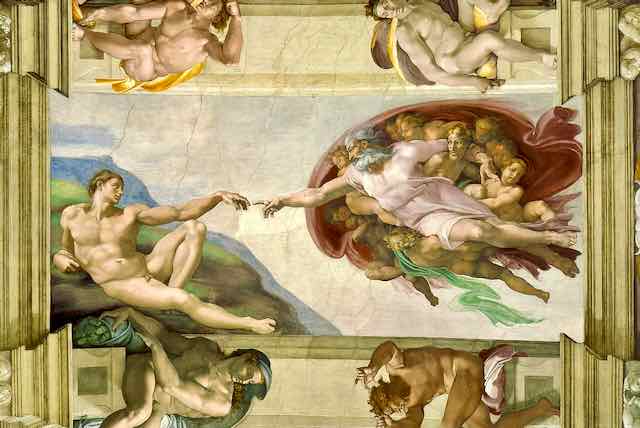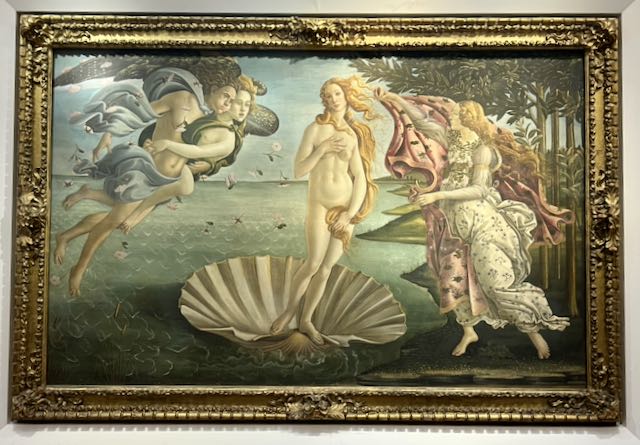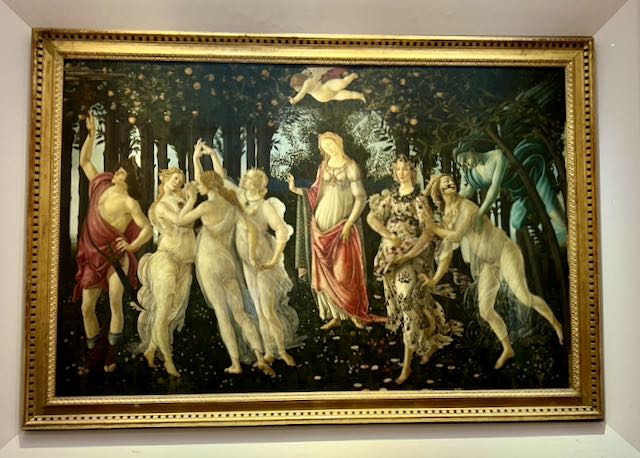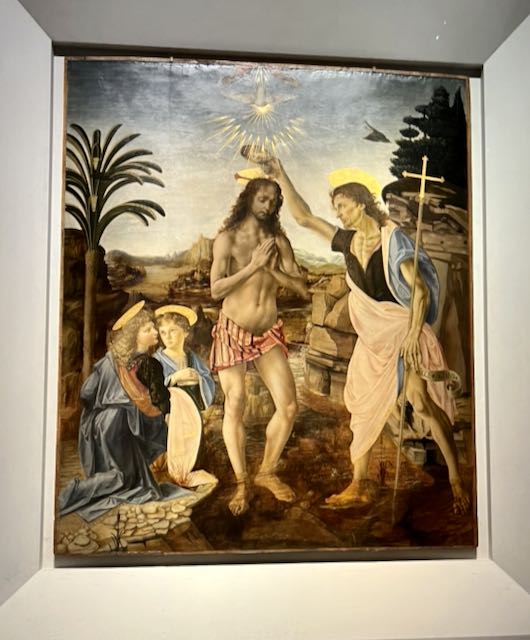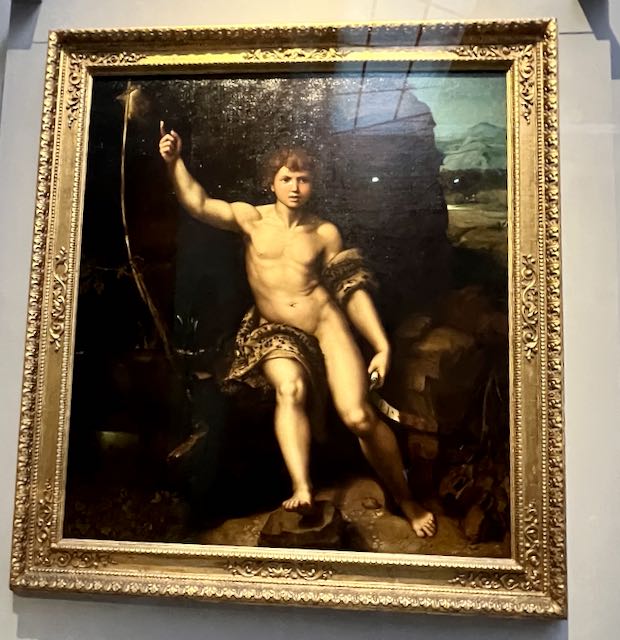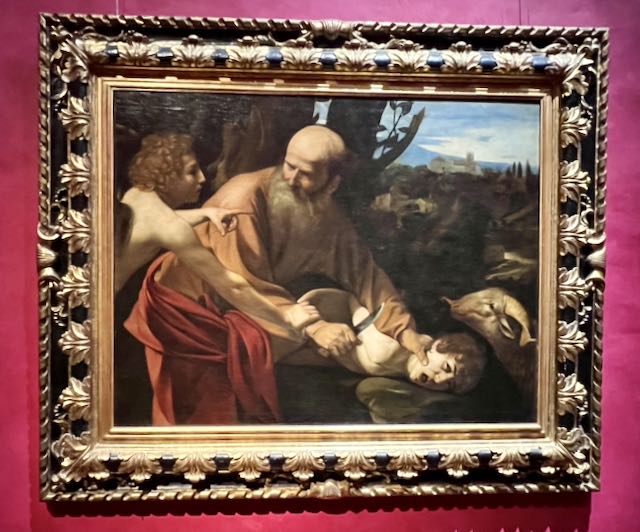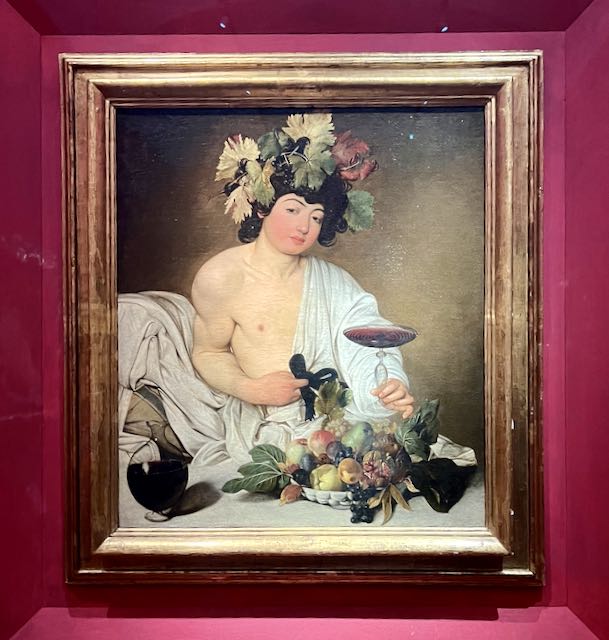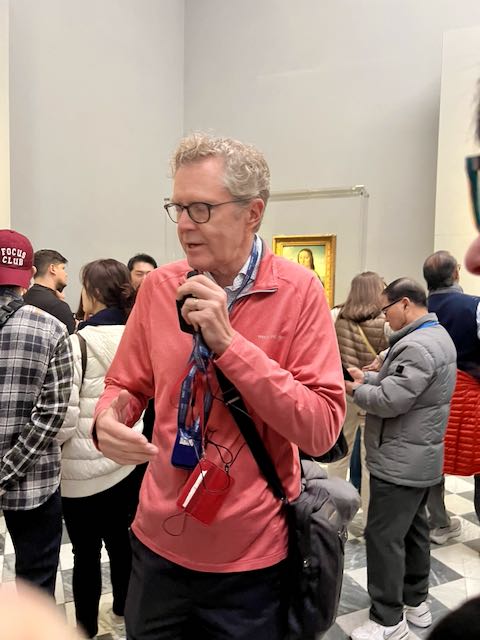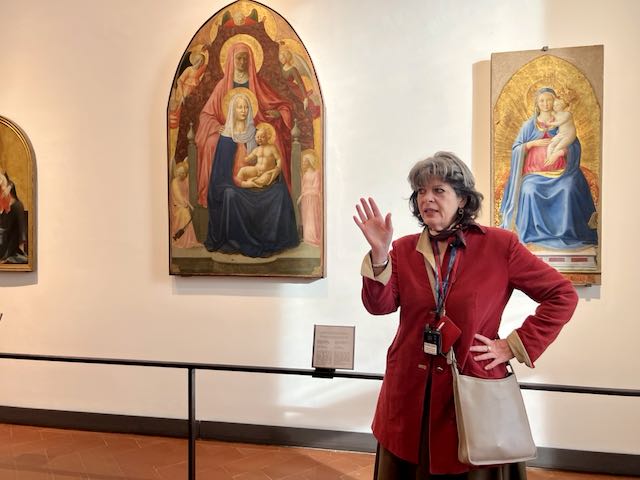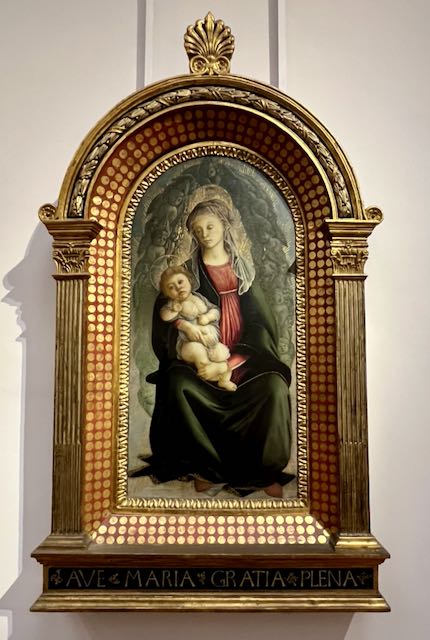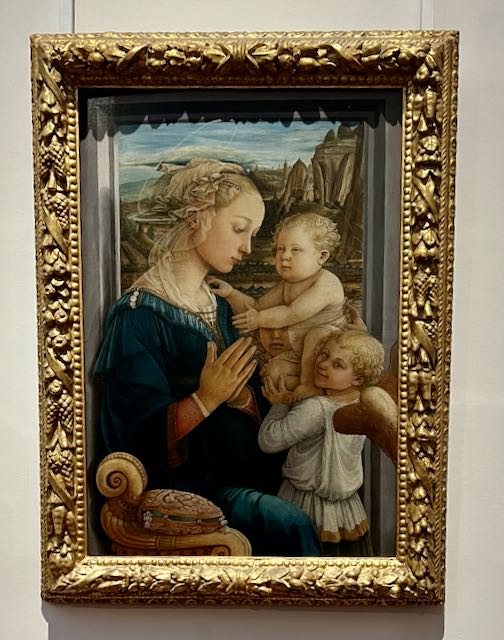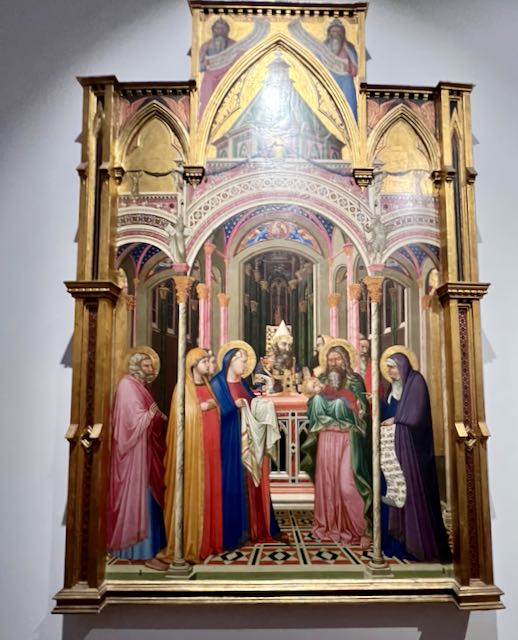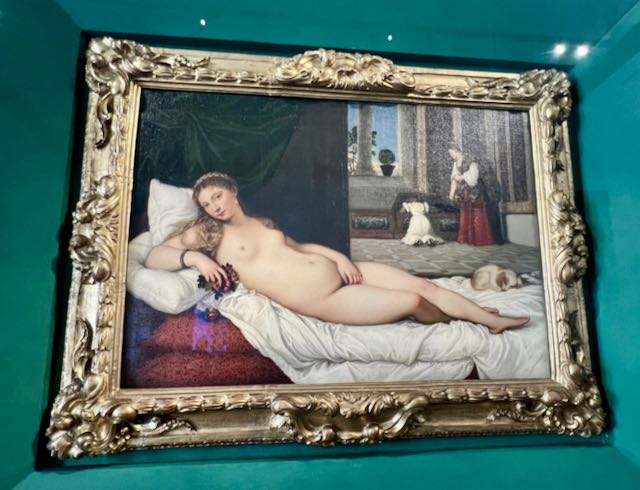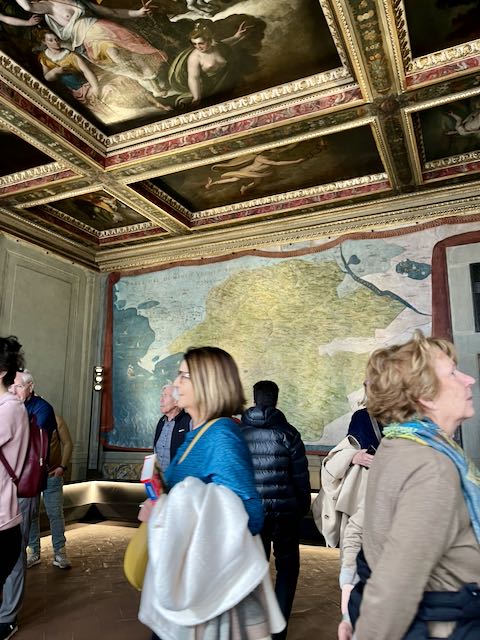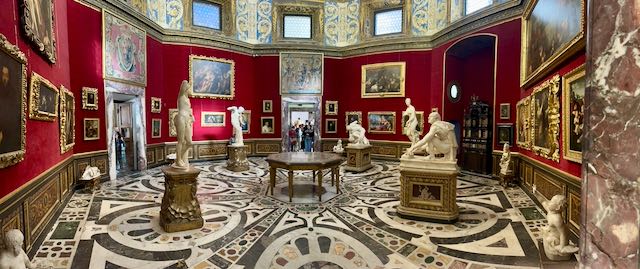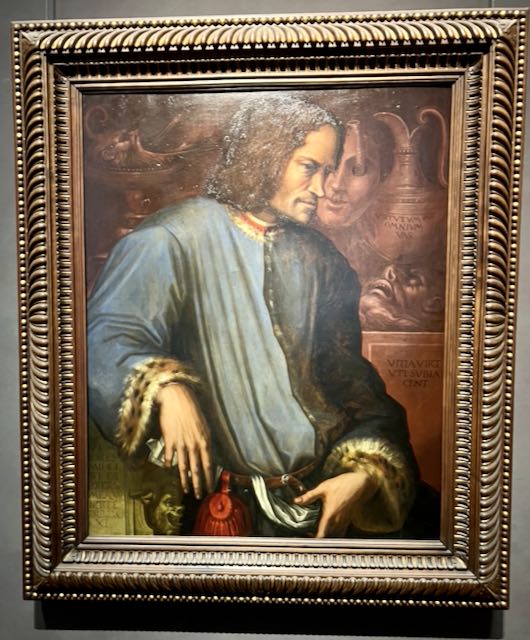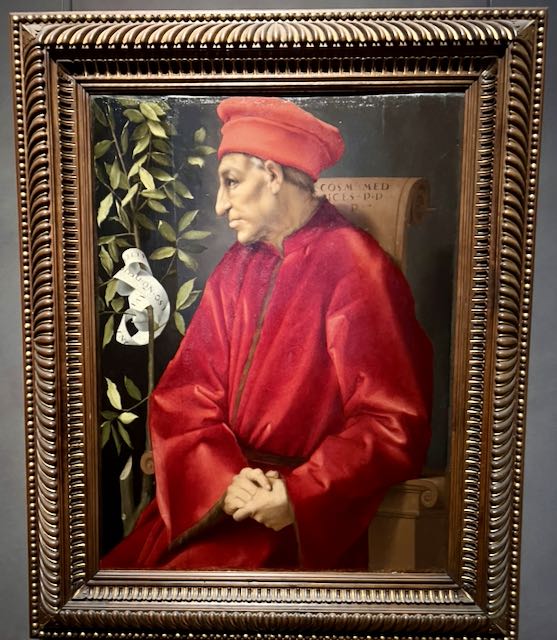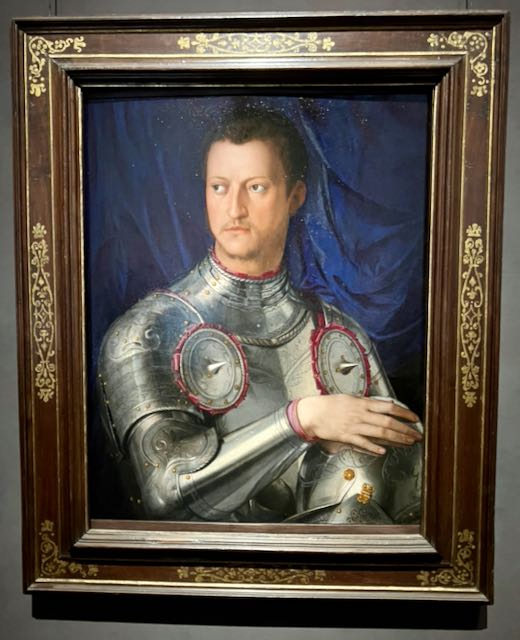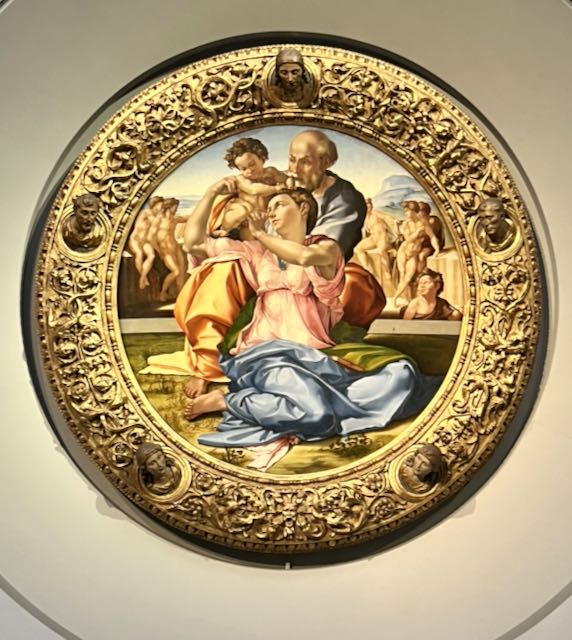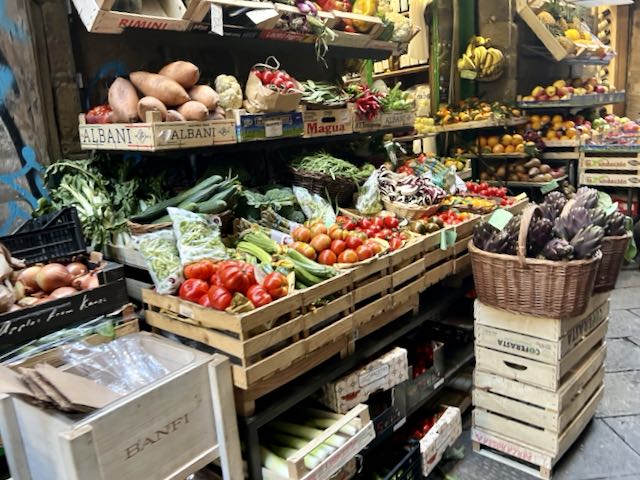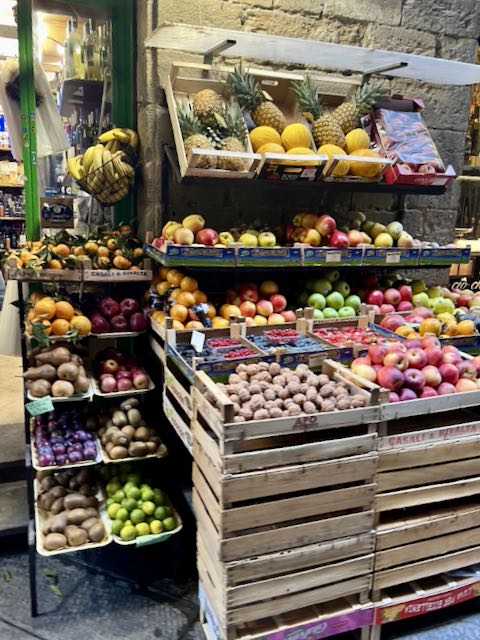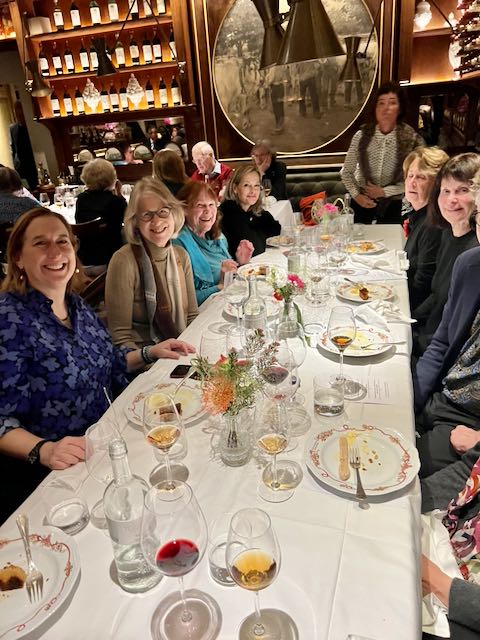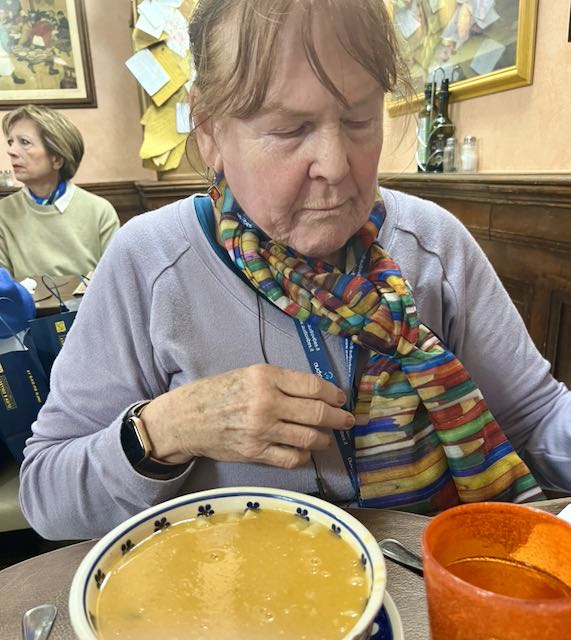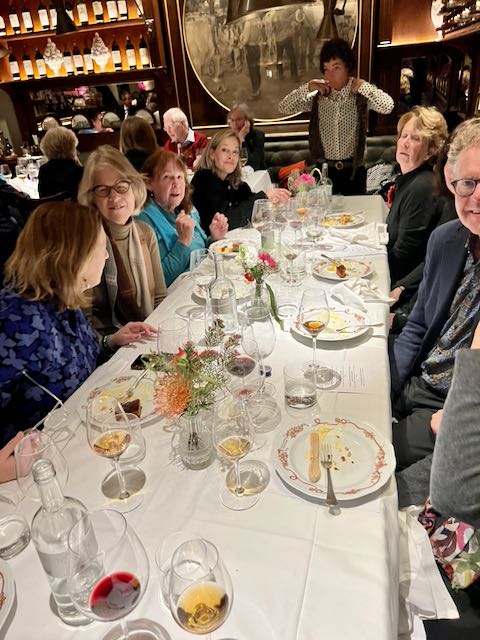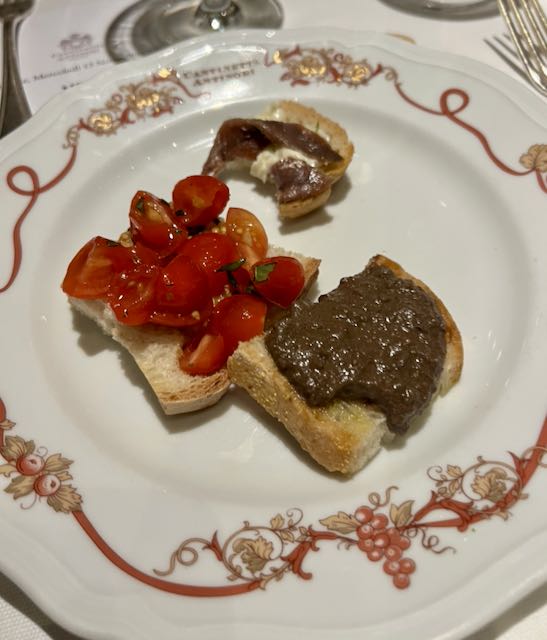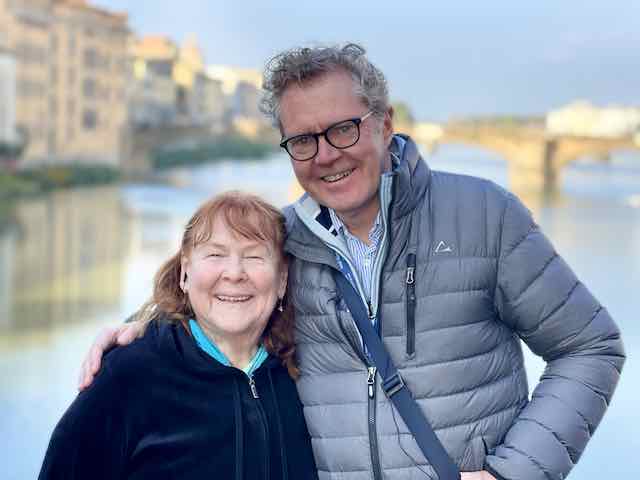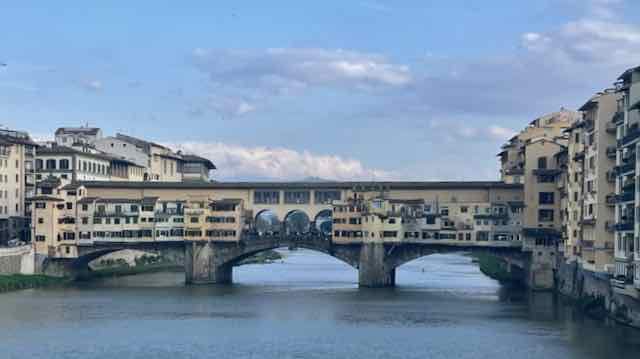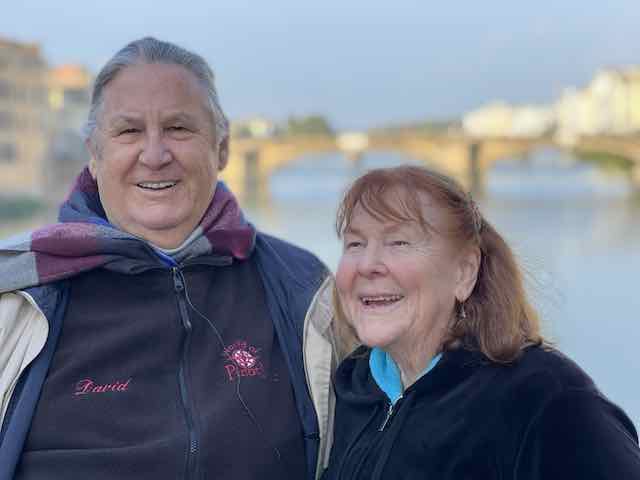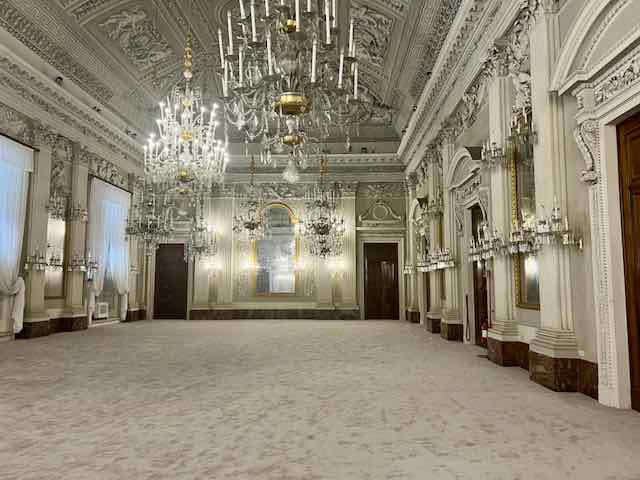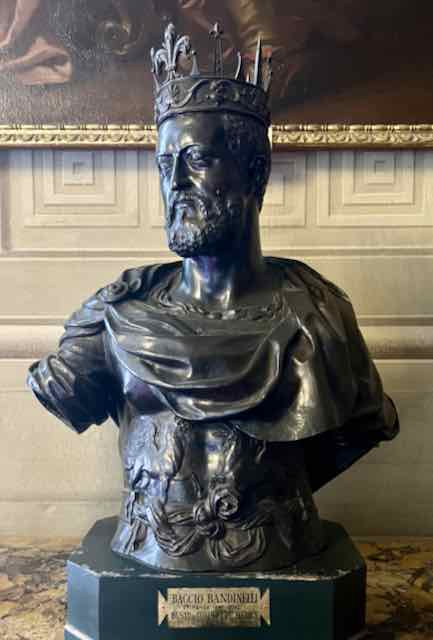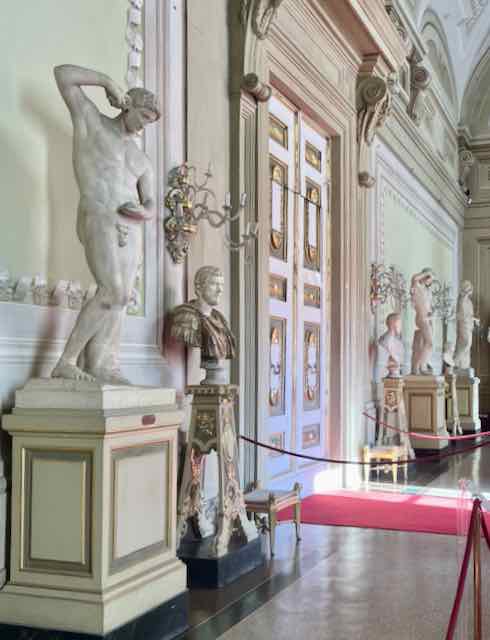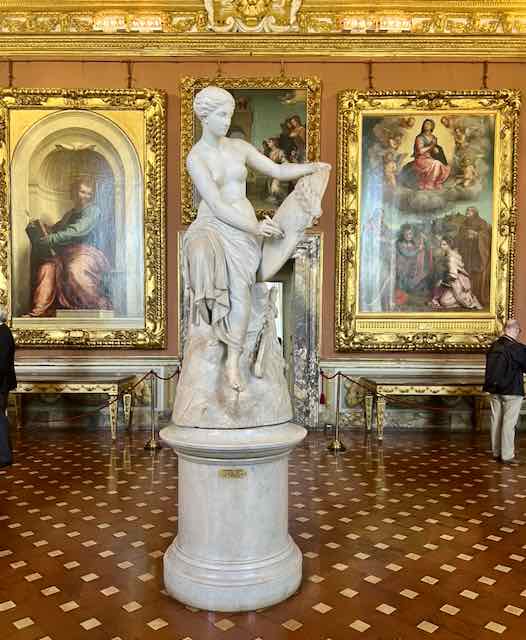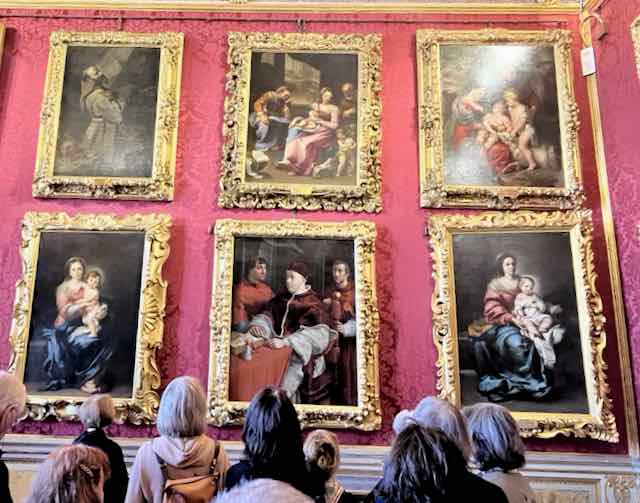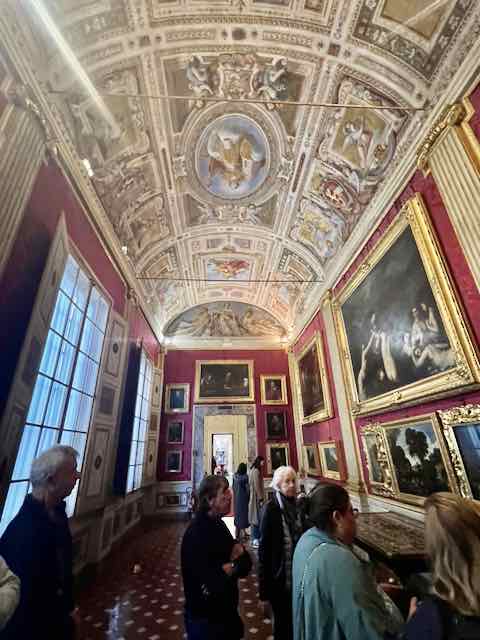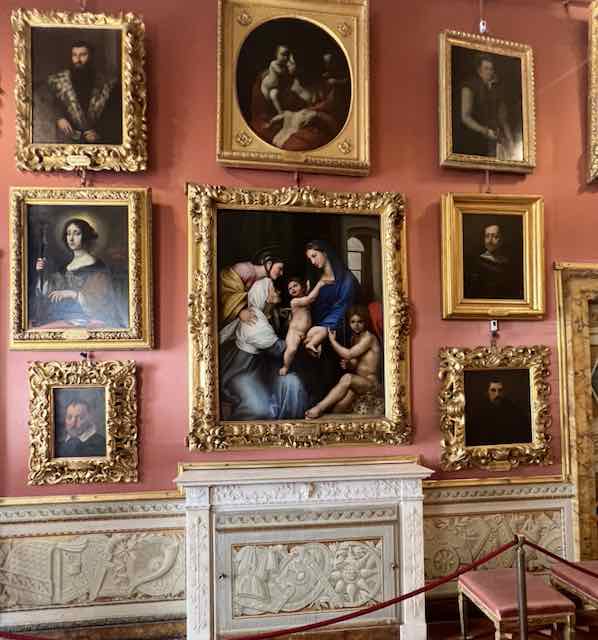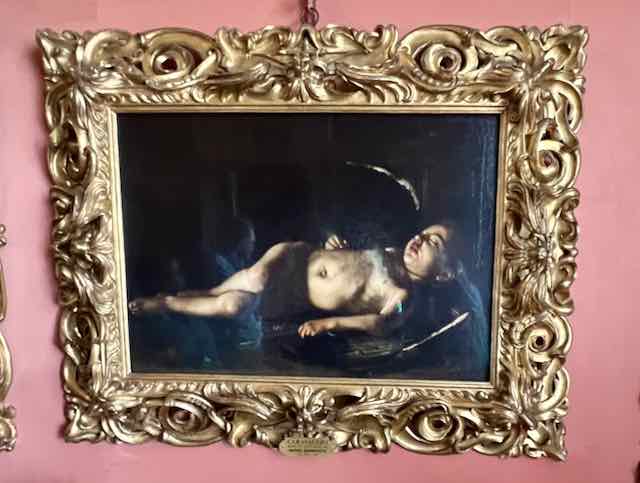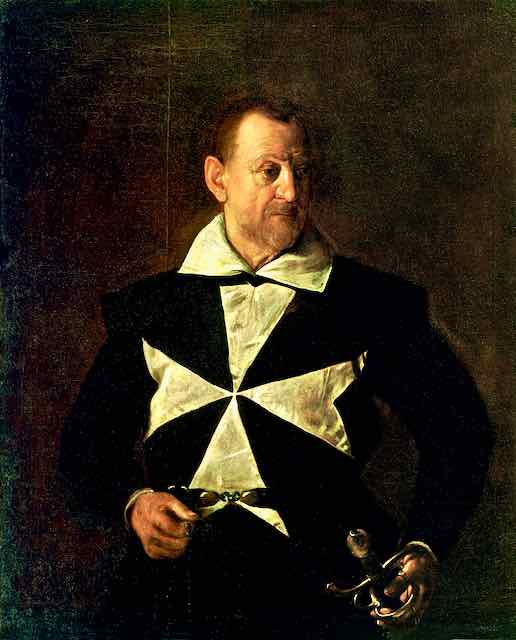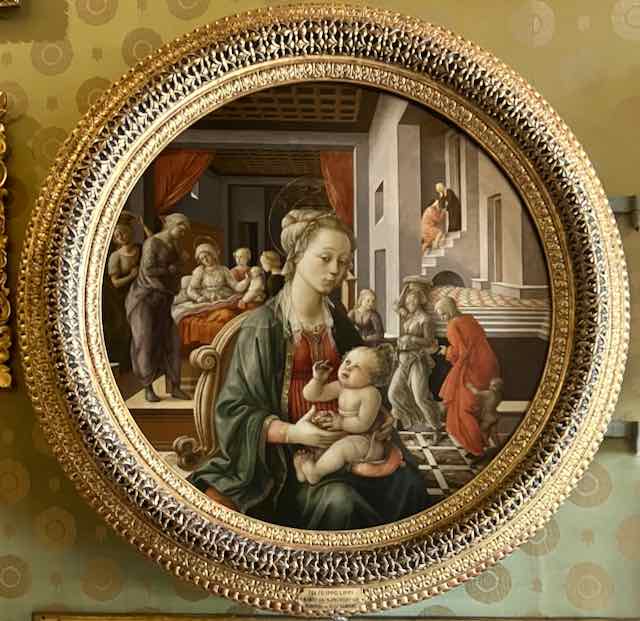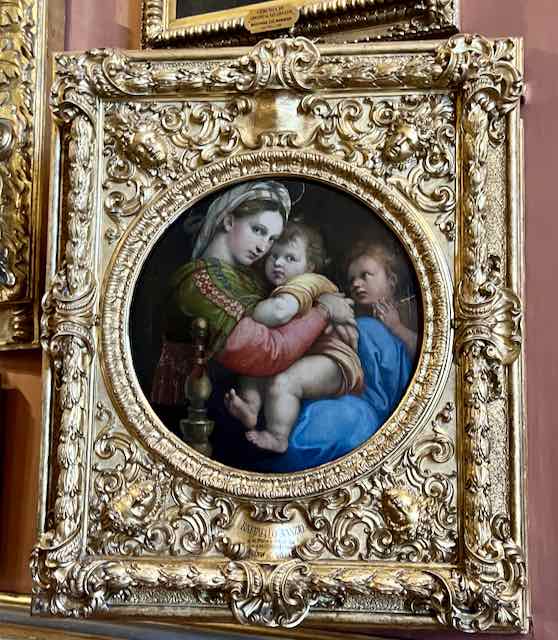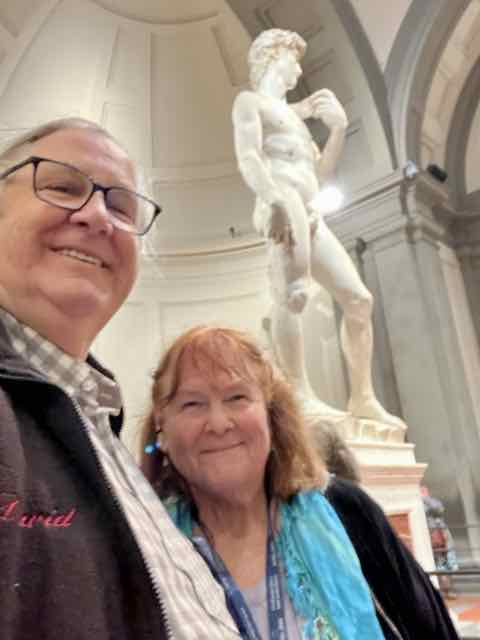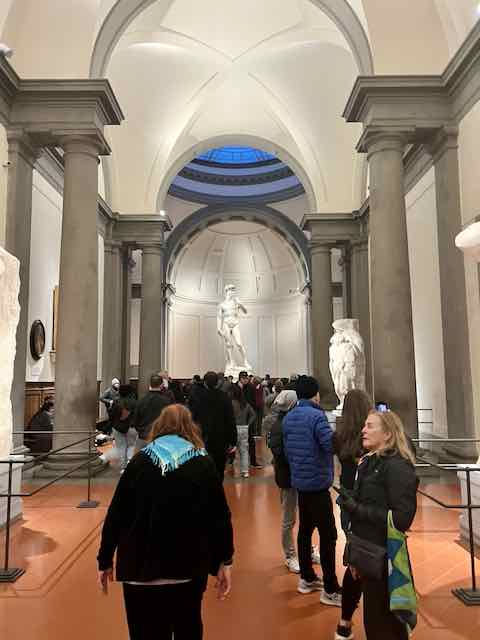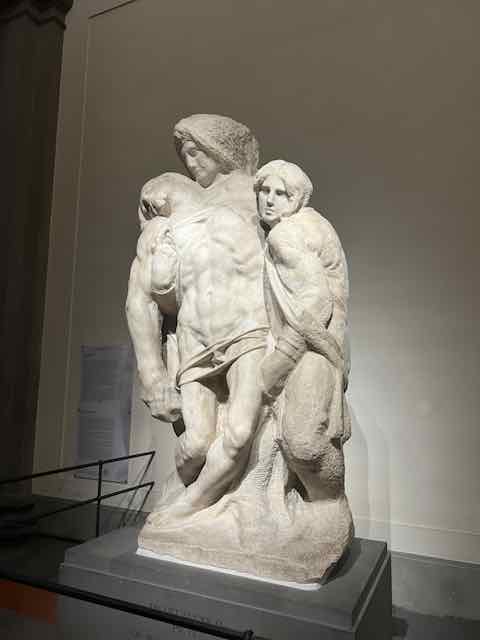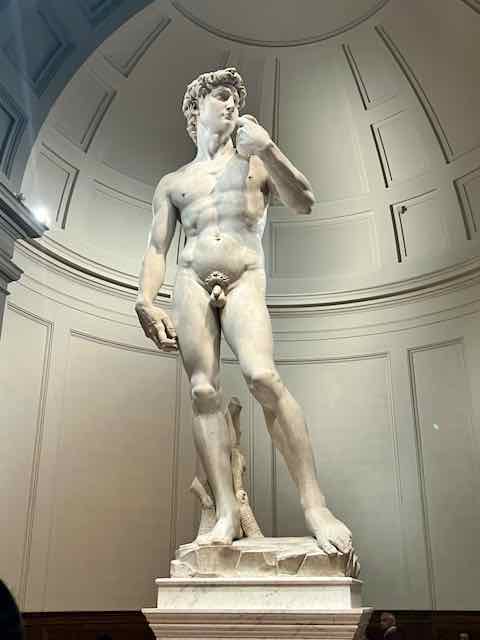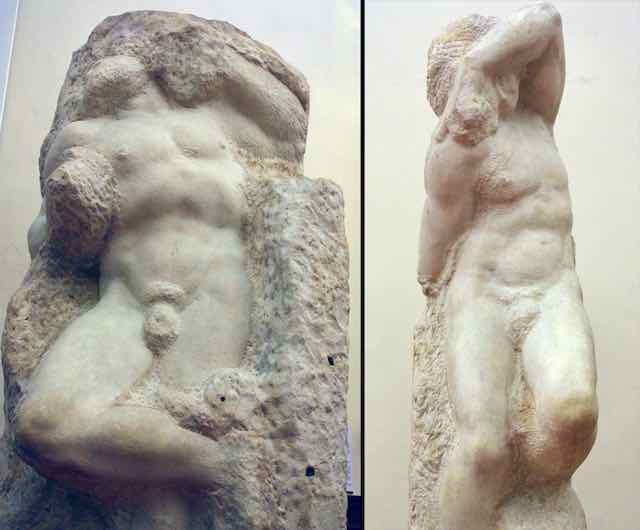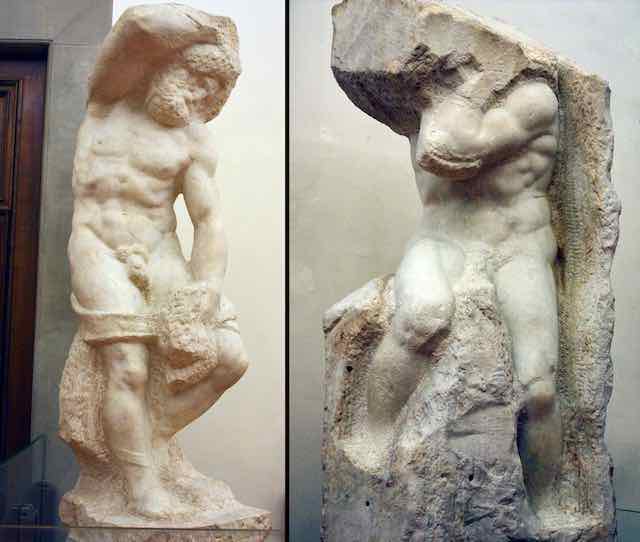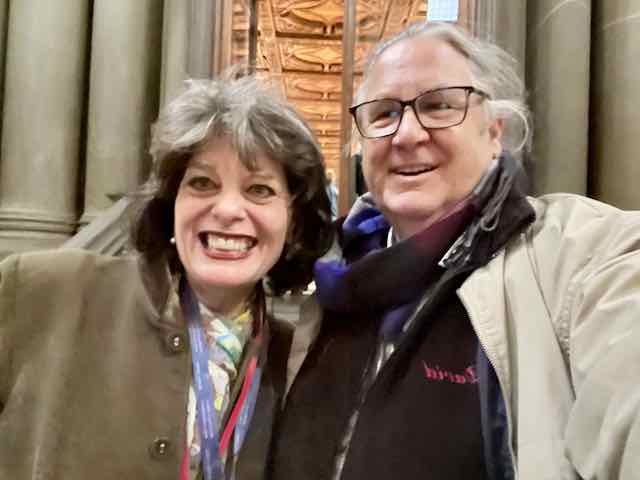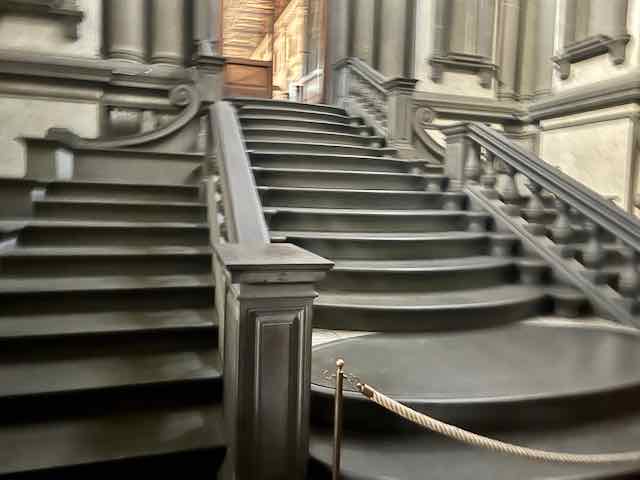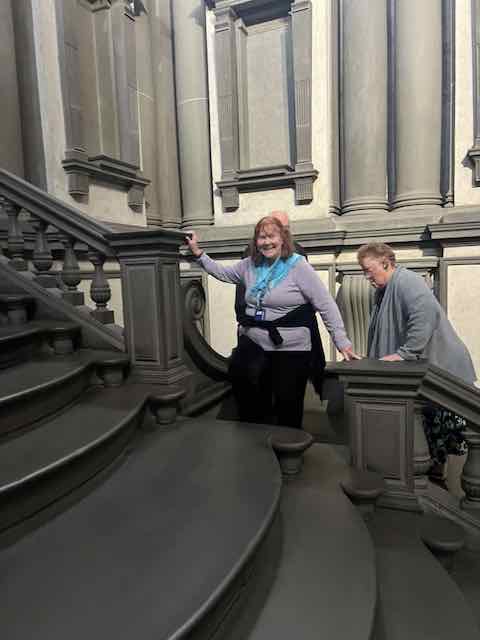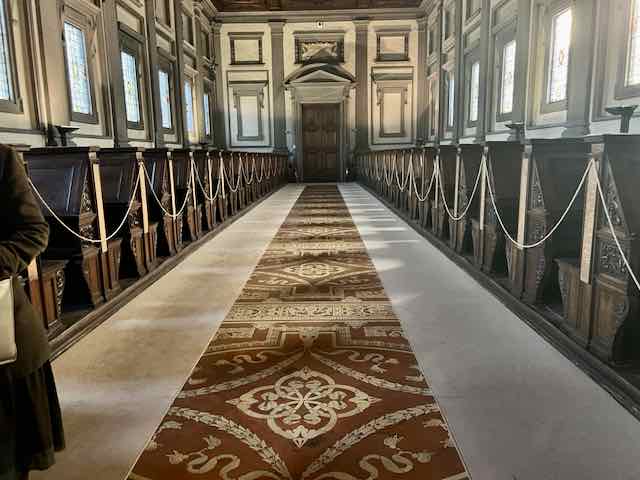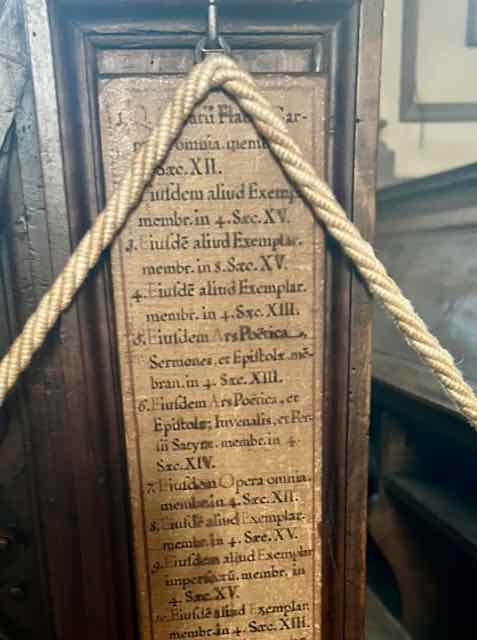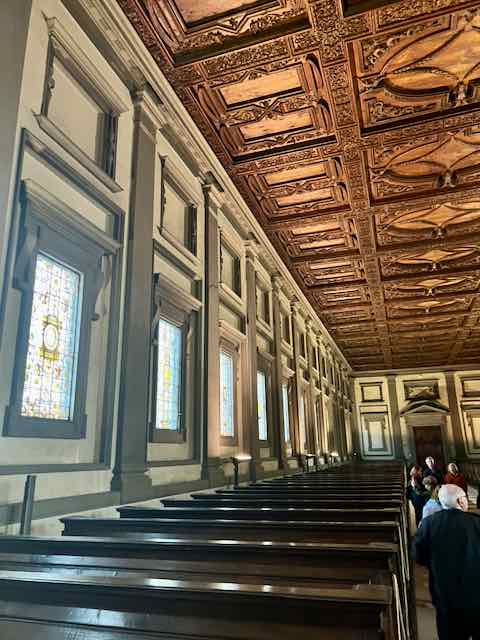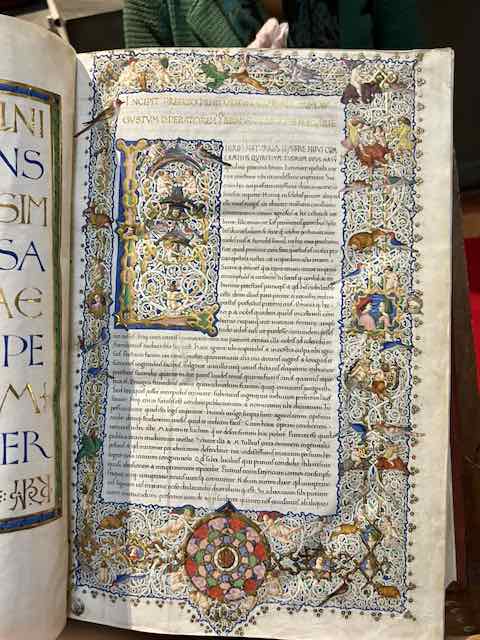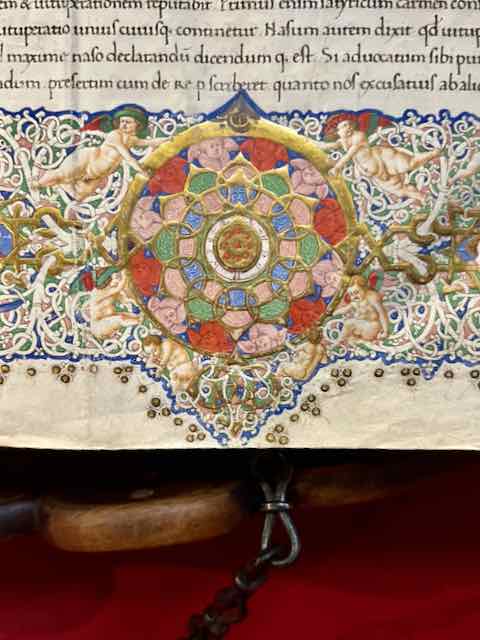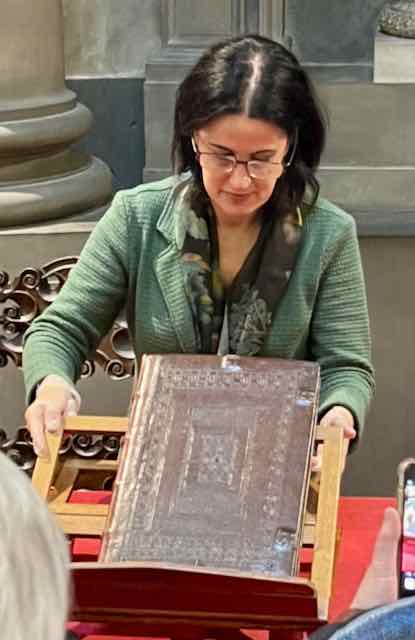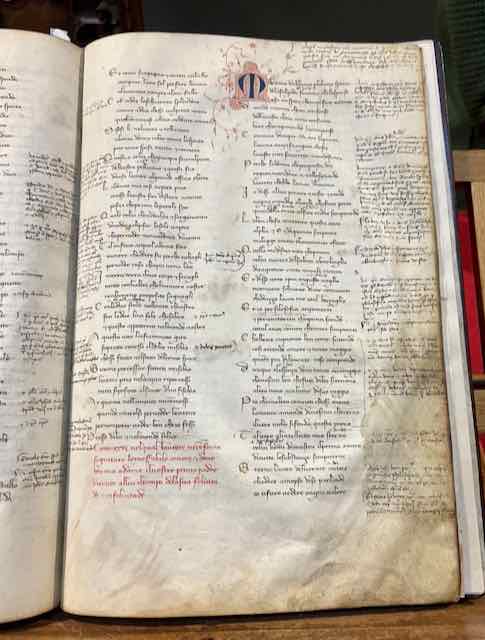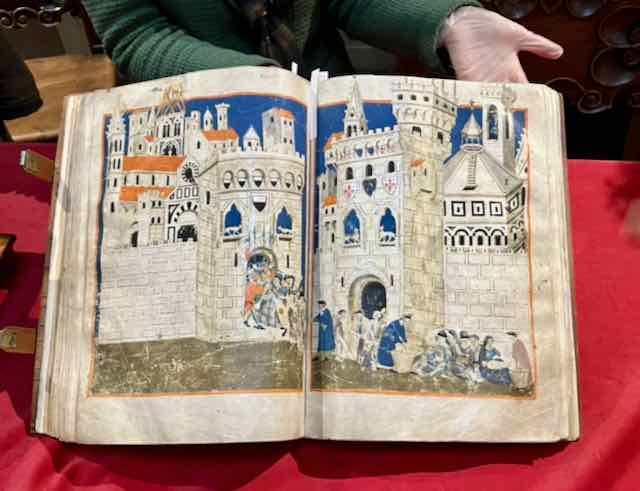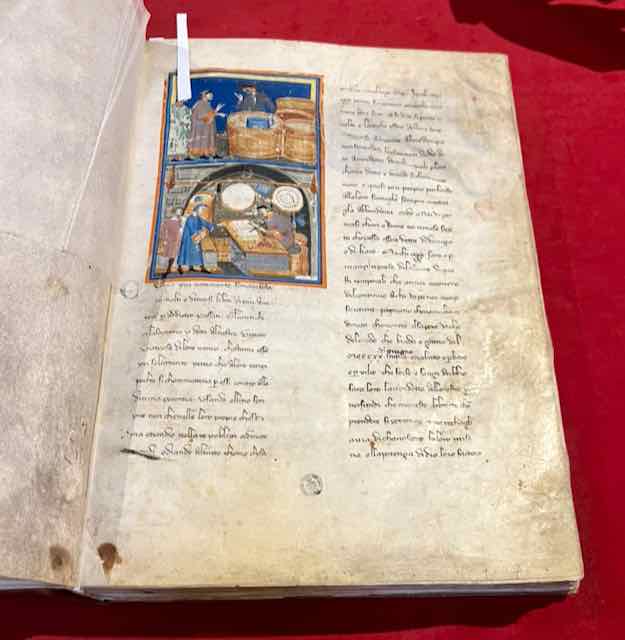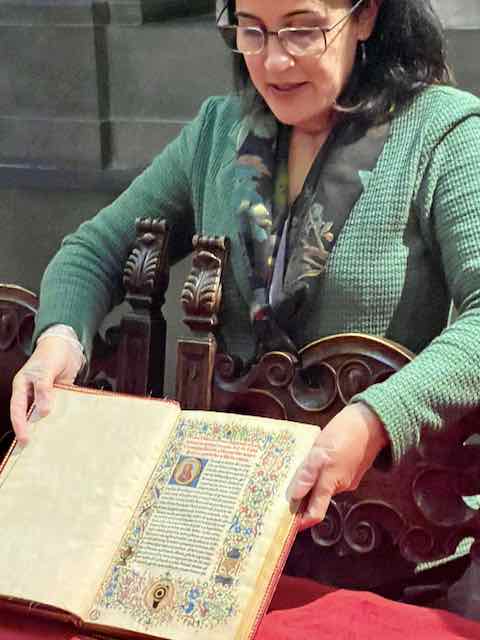Naples – the city that has been around a very long time having been founded by Greeks in the first millennium BC, has been continuously occupied every since. Over the years, it has been ruled by various powers, was the capital for the Duchy of Naples subsequently as the capital of the Kingdom of Naples (1282–1816), and finally as the capital of the Kingdom of the Two Sicilies — until the unification of Italy in 1861. As a result, it has a very different personality then other parts of Italy and is the home where the beloved pizza was first baked.
Our visit, to this magical place, started early with a 2 plus hour ride from Rome to the historic city center where we first visited the Pio Monte della Misericordia chapel and the Severo Chapel. En route, our rest stop provided an overlooked of the Monte Cassino monastery, the first house of the Benedictine Order, famous for their aperitif and an awful WWII miscalculation.
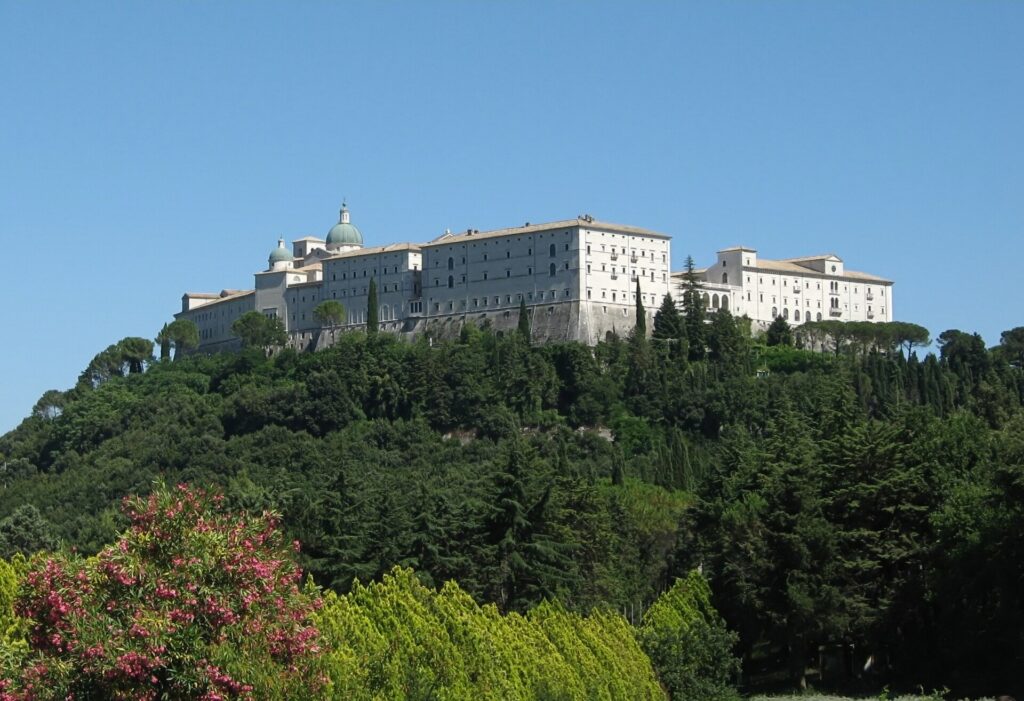
The Abbey was rebuilt after the war. In the early 1950s, President of the Italian Republic Luigi Einaudi gave considerable support to the rebuilding. Pope Paul VI consecrated the rebuilt Basilica on 24 October 1964.
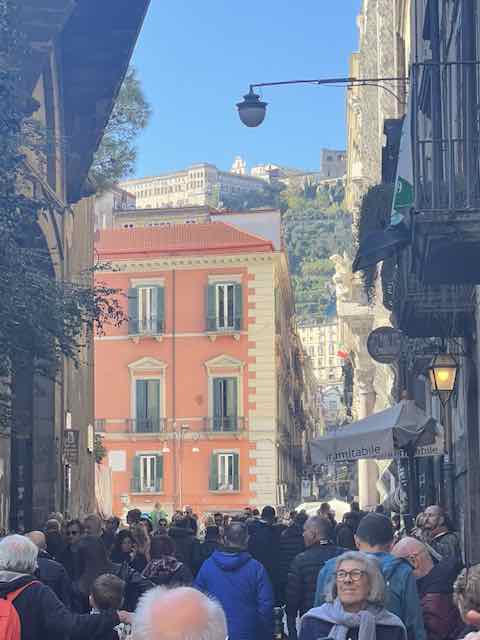

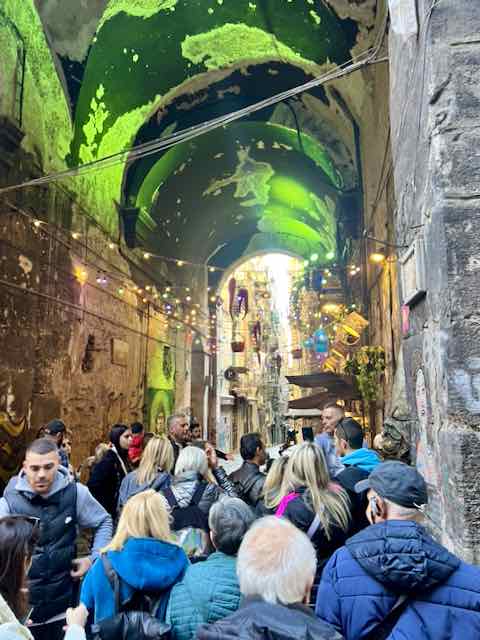
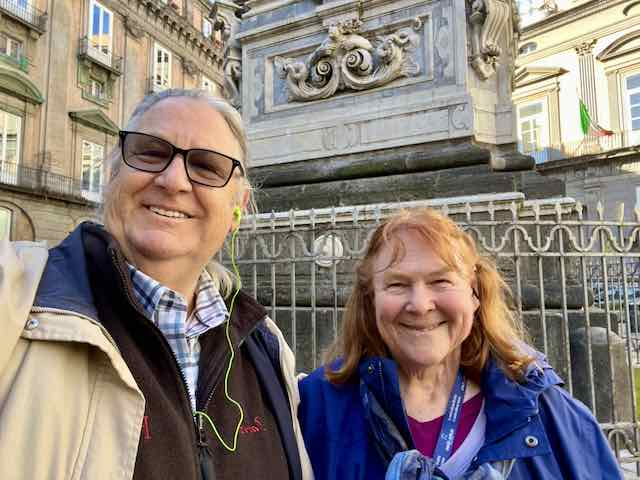
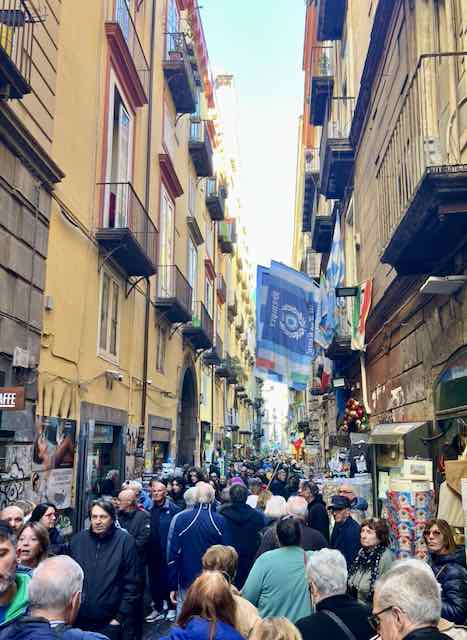
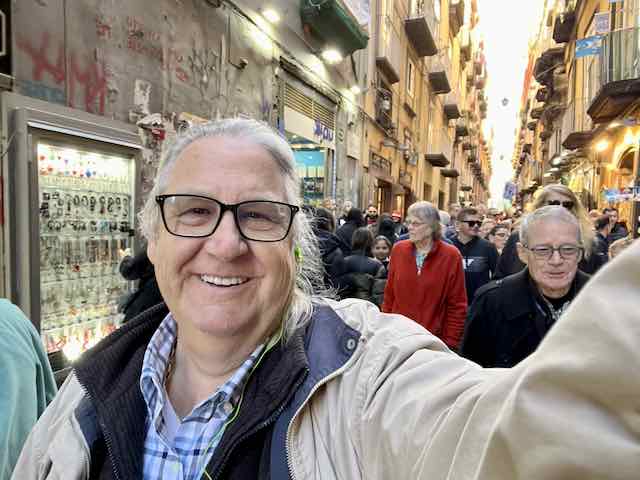
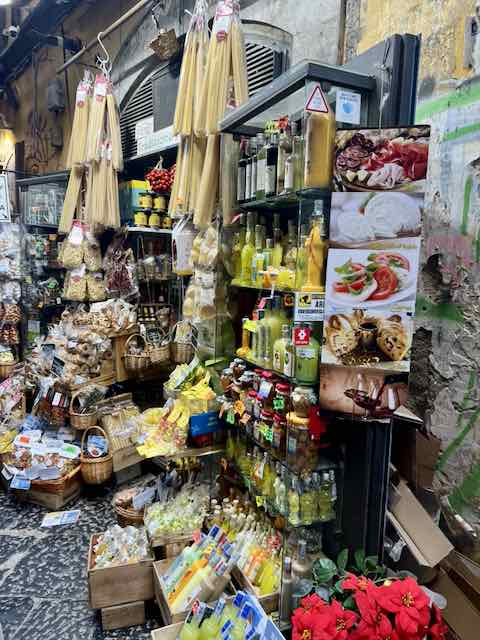
A few pictures along the way
Before getting to any artwork or other treasures, we did a walking tour through the historic center of the City. Along the way we saw a bunch of neat old buildings, some Roman Ruins (of course) and learned about the city from our local guide. As it was Saturday, there was clearly a lot of hustle and bustle going on everywhere we went but it was lots of fun.
One stop was to The Piazza Bellini. With a statue by Alfonso Bazzico, depicting of the famous composer Vincenzo Bellini erected in his honor, Bellini looks down on a small park and a complex of roman ruins.
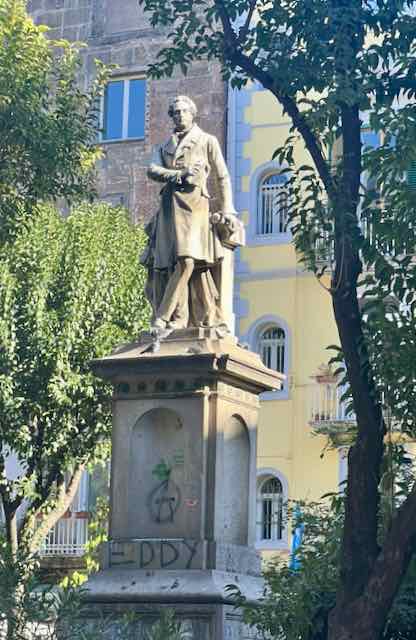
The subterranean ruins are the former western walls of the Ancient Greek city of Neapolis.
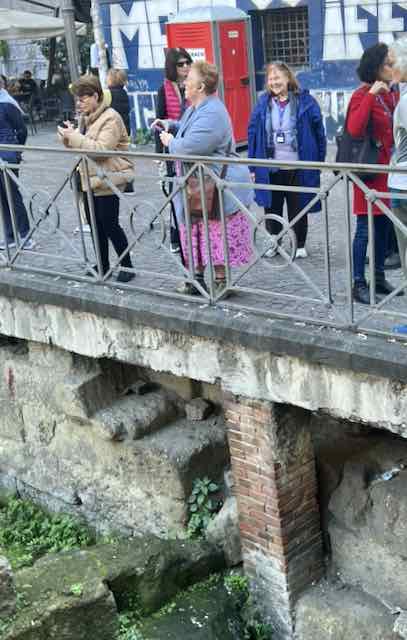
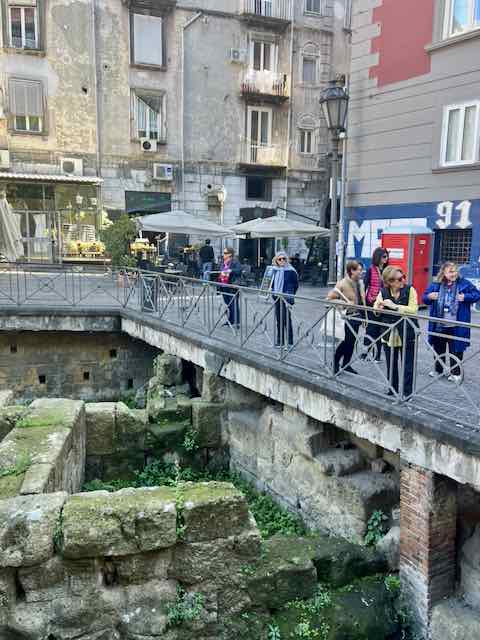
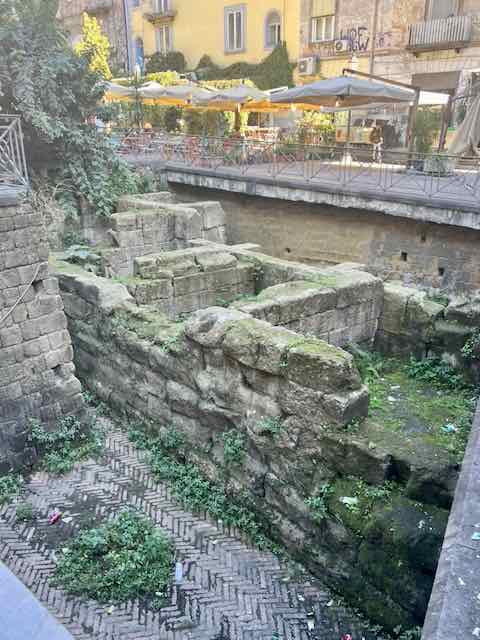
We continued our walk eventually making our way to The Pio Monte della Misericordia. This is a church in the historic center of Naples, and is famous for its works of art, particularly Caravaggio’s The Seven Works of Mercy.
Their intent was to provide a place a hospital for the care of the Incurables and ministered to the sick. About a year later, they established an institution and commissioned a small church, to be built near the staircase leading to the Cathedral. In 1605, they received an apostolic letter from Pope Paul V, according special privileges to the high altar.
The church was consecrated in September 1606.
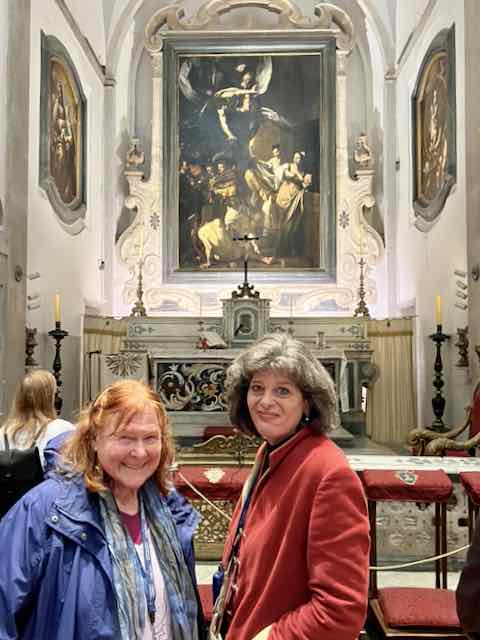
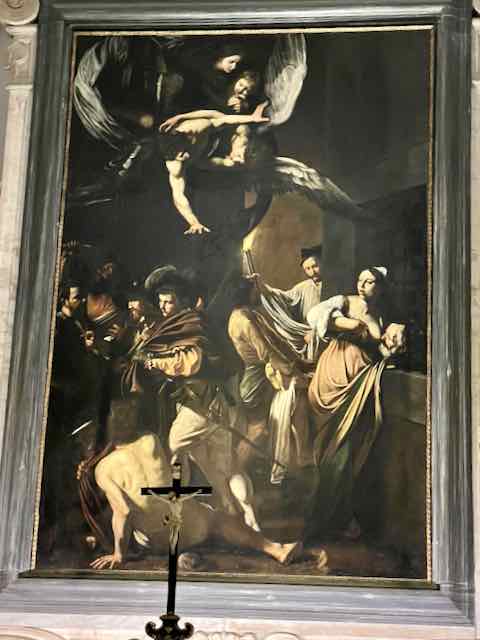
Caravaggio was commissioned to create a painting depicting the The Seven Works of Mercy, about 1607 while he was in Naples. The painting depicts the seven corporal works of mercy in traditional Catholic belief, which are a set of compassionate acts concerning the material needs of others.
The painting was made for, and is still housed in the church where it was intended. Originally, it was meant to be seven separate panels around the church; however, Museo di CapodimonteCaravaggio combined all seven works of mercy in one composition which became the church’s altarpiece. Turns out this was one of Elaine Ruffolo’s favorite Caravaggio paintings.
After a lunch break, we headed to the Palazzo Zevallos Stigliano to see Caravaggio’s St Ursula.
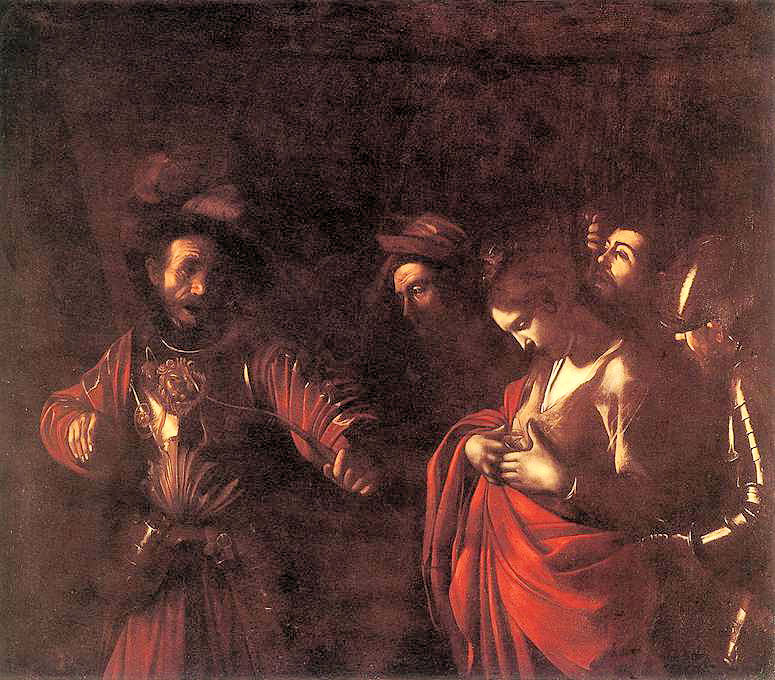
The Martyrdom of Saint Ursula is thought to be his last picture. According to one version of the legend of Saint Ursula, she and her eleven thousand virgin companions were captured by the Huns. The eleven thousand virgins were slaughtered, but the king of the Huns was overcome by Ursula’s modesty and beauty and begged her forgiveness if only she would marry him. Ursula replied that she would not, upon which the king shot her with an arrow.
One last stop for the day was to see one last painting by Caravaggio – The Flagellation of Christ, located in the Museo Nazionale di Capodimonte.
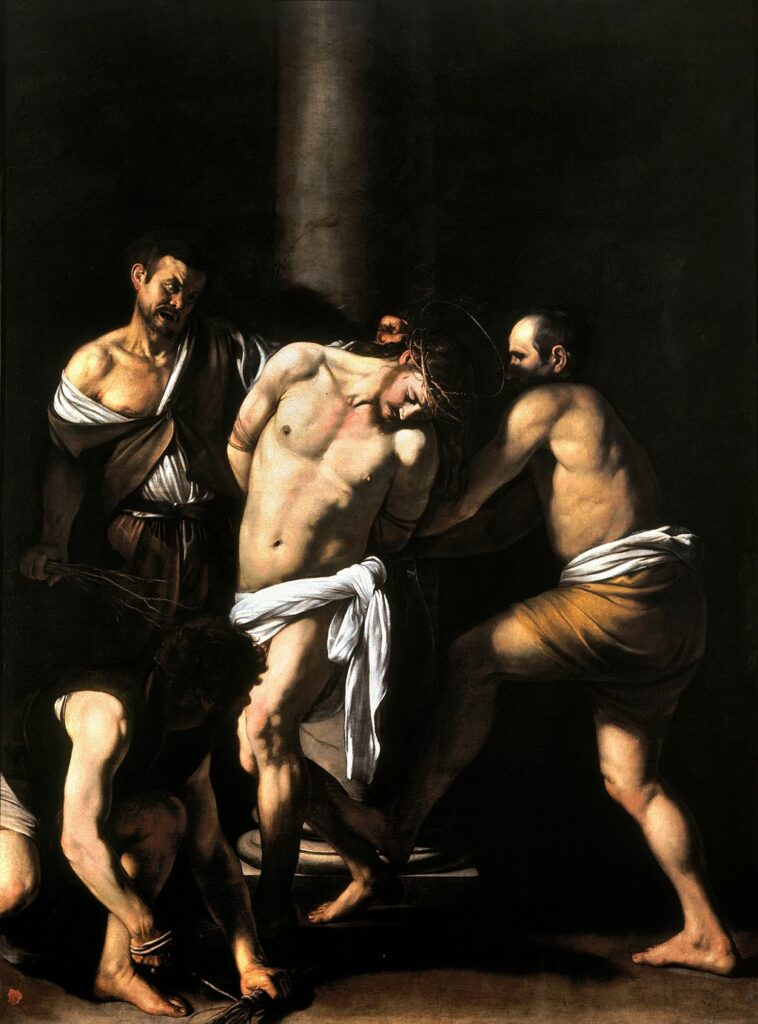
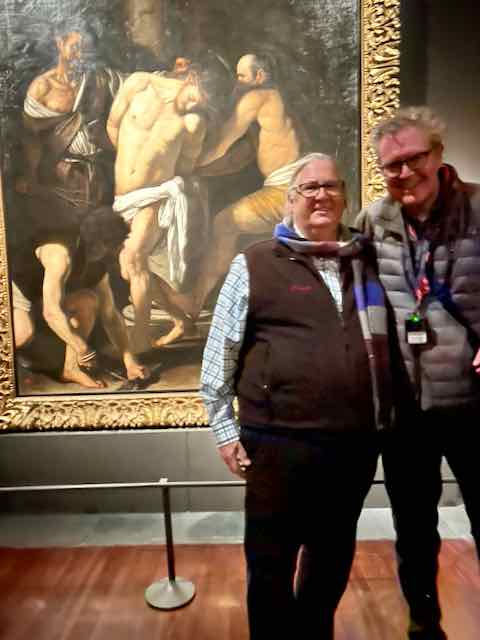
According to art biographer Gian Pietro Bellori (1672), this work was commissioned by the di Franco family for a chapel in the church of San Domenico Maggiore in Naples. The family were connected with the Confraternity of the Pio Monte della Misericordia, for whose church Caravaggio had already painted The Seven Works of Mercy. It was moved to the museum at Capodimonte in 1972.
It was a fantastic day with great information from both Ross and Elaine to make sure we had a good appreciation of all that we saw. Back on the bus and back to Rome.
